DAMIEN HIRST – ”Treasures from the Wreck of the Unbelievable”
at the Pinault Foundation – Punta della Dogana and Palazzo Grassi
from April 9th to December 3rd 2017
The Venetian public’s first encounter with Damien Hirst was at the ‘Aperto 93’ Venice Biennale (1993) with ‘Mother & Child (Divided)’ – a cow and calf bisected and preserved in four separate tanks of formaldehyde, an exhibition curated by Achille Bonito Oliva with Harald Szeeman as assistant curator. The work became the central piece of Hirst’s Turner Prize winning exhibition in 1995. Twenty-four years on Hirst returns to Venice with a much anticipated solo exhibition at both the Palazzo Grassi and Punta della Dogana. So what are the expectations preceding the opening on 9th April?
The Pinault Foundation possesses some of Hirst’s signature pieces but the fact that he has been working on this particular exhibition for 5 years, that his previous couple of shows have underwhelmed the critics, and the size and prominence of this enormous exhibition (189 pieces) which will run during the Venice Biennale means there is much at stake for the artist. Some insiders have said that ‘Treasures from the Wreck of the Unbelievable’ will not only repair Hirst’s reputation – but bolster it. Opening on 9th April – a month before the Biennale – it will be a first stop for other artists, critics, collectors + the public to experience and to judge it. Given the sheer number of opening during the Vernissage days at the beginning of the Biennale, the lectures, parties and official functions – it makes Hirst a go-to rather than try-&-see show in the tight schedules of the art cognoscenti and opinion formers diaries.
Hirst has, from his earliest days at Goldsmiths Art School, been an innovative marketer and entrepreneur of his own career and work. Following Andy Warhol he created his own ‘factory’ on the edge of a housing estate in Dudbridge, Gloucestershire which at 97,000 square feet is the size of 34 tennis courts. This talent for self-promotion and business has often been used to criticise Hirst but he himself created a show from his collection of works by the other great entrepreneur and leading light of Pop Art Jeff Koons including the series ‘Made In Heaven’ which provoked a storm when shown at the 1990 Venice Biennale as they include erotic sculptures and photos of Koons and the Hungarian porn star turned Italian parliamentarian Ilona Staller (Cicciolina), who married in 1991 and divorced a year later.
Damien Hirst’s interest in Pop Art is only one aspect of his artistic language. At 51 he is one of the most prominent of the YBAs (Young British Artists) whose works were collected by Charles Saatchi and whose pivotal moment in the public consciousness was the Sensation show at the Royal Academy of Arts in London (1997). Among these artists, Hirst and Marc Quinn have many points in common, they represent the exploration of cultural taboos such as death, violence, disease, and everyday neurosis.
Interviewed about ‘Mother & Child (Divided) Hirst spoke of cows being ‘the most slaughtered animals ever’, and even before the opening of ‘Treasures from the Wreck of the Unbelievable’ animal rights activists (Animalisti) have been in the news with their protests against this current exhibition, dumping 40kg of dung outside the Palazzo Grassi with the exhortation ‘Damien Hirst Go Home! Check Out This Work of Art! 100% Animalisti’. Everyone connected with the current exhibition has stressed that it will feature no animals.
Hirst has the ability to show in a single work opposites of beauty and aesthetic purity with the macabre and unspeakable. An artist and showman who controls his own destiny we shouldn’t be surprised that very little advanced information has leaked from official & non-official sources prior to the opening. His last major show was the retrospective at Tate Modern in 2012 and what we know is that ‘Treasures from the Wreck of the Unbelievable’ was created specifically for these sites and is inspired byHirst’s obsession with the ocean and the blurring of fact & legend, fiction & reality, creation & myth.
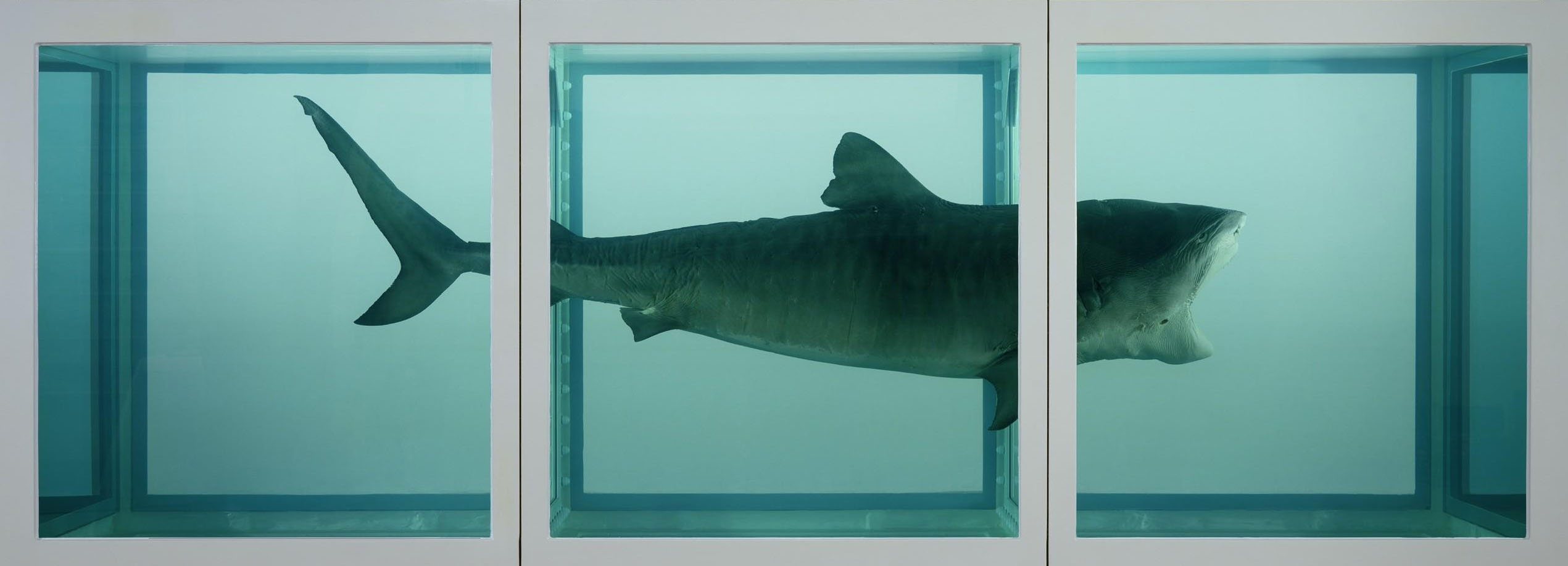
About Damien Hirst
Damien Hirst was born in 1965 in Bristol, he grew up in Leeds and studied Beaux-Arts between 1986 and 1989 at the Goldsmith College in London.
During his second year as an art student Damien Hirst took part in the organization of ‘Freeze’ a collective exhibit known for launching not only his
career but also those of an entire generation of young British artists.
From the late ’80’s Hirst produced a wide variety of installations, sculptures, paintings and drawings all devoted to the exploration of the complex
relationship between art, beauty, religion, science, life and death. In 1995 he won the Turner Prize
Through his works – like The Physical Impossibility of ‘Death in the Mind of Someone Living’, a shark in formaldehyd and ‘For the Love of God’, a platinum mold of a skull covered by 8.601 diamonds – Damien defies the certitudes of contemporary world by examining all the incertitudes inherent into man’s nature.
At the present time he lives and works between London and Gloucester.
Since 1987 more than 90 personal exhibits have already been organized worldwide on Damien Hirst. His works have also been shown in more than 300 collective exhibits.
One of the latest greatest exhibitions was organized in 2012 by the Tate gallery.
Other exhibits were held in Doha (2013-2014), Florence (2010), Montecarlo (2010), Amsterdam (2008), Oslo (2005), Naples (2004).
The present exhibit in Venice is to be considered the largest and most complete ever since 2012.
the exhibit
INTRODUCTION
In 2008, a vast wreckage site was discovered off the cost of East Africa. The finding lent credence to the legend of CiF Amotan II, a freed slave from Antiochia (north-west Turkey) who lived between the mid-first and early-second centuries CE.
Ex-slaves were afforded ample opportunities for socio-economic advancement in the Roman Empire through involvement in the financial affairs of their patrons and past masters. The story of Amotan (who is sometimes referred to as Aulus Calidius Amotan) relates that the slave accumulated an immense fortune on the acquisition of his freedom. Bloated with excess wealth, he proceeded to build a lavish collection of artefacts deriving from the lengths and breadths of the ancient world. The freedman’s one hundred fabled treasures – commissions, copies, fakes, purchases and plunder – were brought together on board a colossal ship, the Apistos (translates from Koine Greek as the ‘Unbelievable’) which was destined for a temple purpose-built by the collector. Yet the vessel foundered, consigning its hoard to the realm of myth and spawning myriad permutations of this story of ambition and avarice, splendor and hubris.
The collection lay submerged in the Indian Ocean for some two thousand years before the site was discovered in 2008, near the ancient trading ports of Azania (south-east African coast). Almost a decade after excavations began, this exhibition brings together the works recovered in this extraordinary find.
A number of sculptures are exhibited prior to undergoing restoration, heavily encrusted in corals and other marine life, at times rendering their forms virtually unrecognizable. A series of contemporary museum copies of recovered artefacts are also on display, which imagine the works in their original, undamaged forms.
Pictures of the exhibit at Punta della Dogana venue – Pinault Foundation
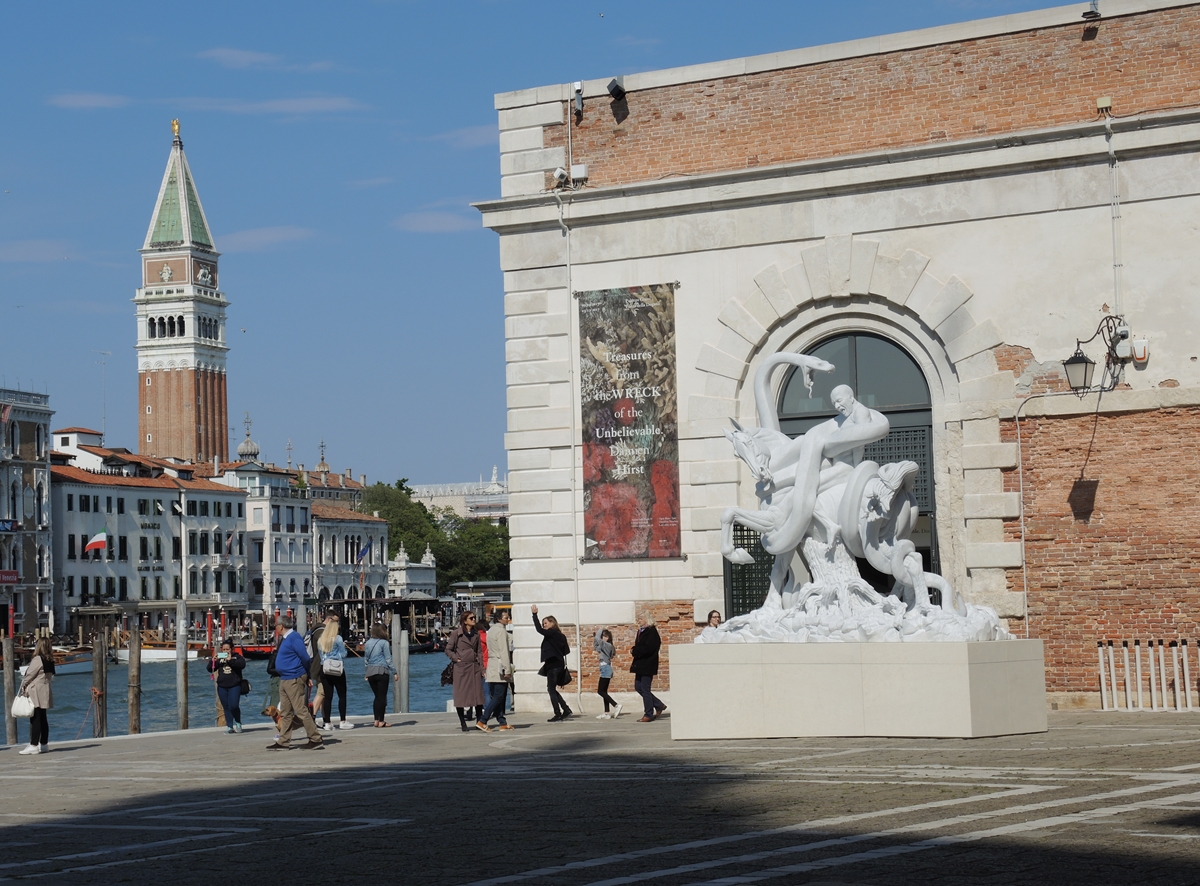
D. Hirst_The Fate of a banished man . Entrance to the Dogana venue
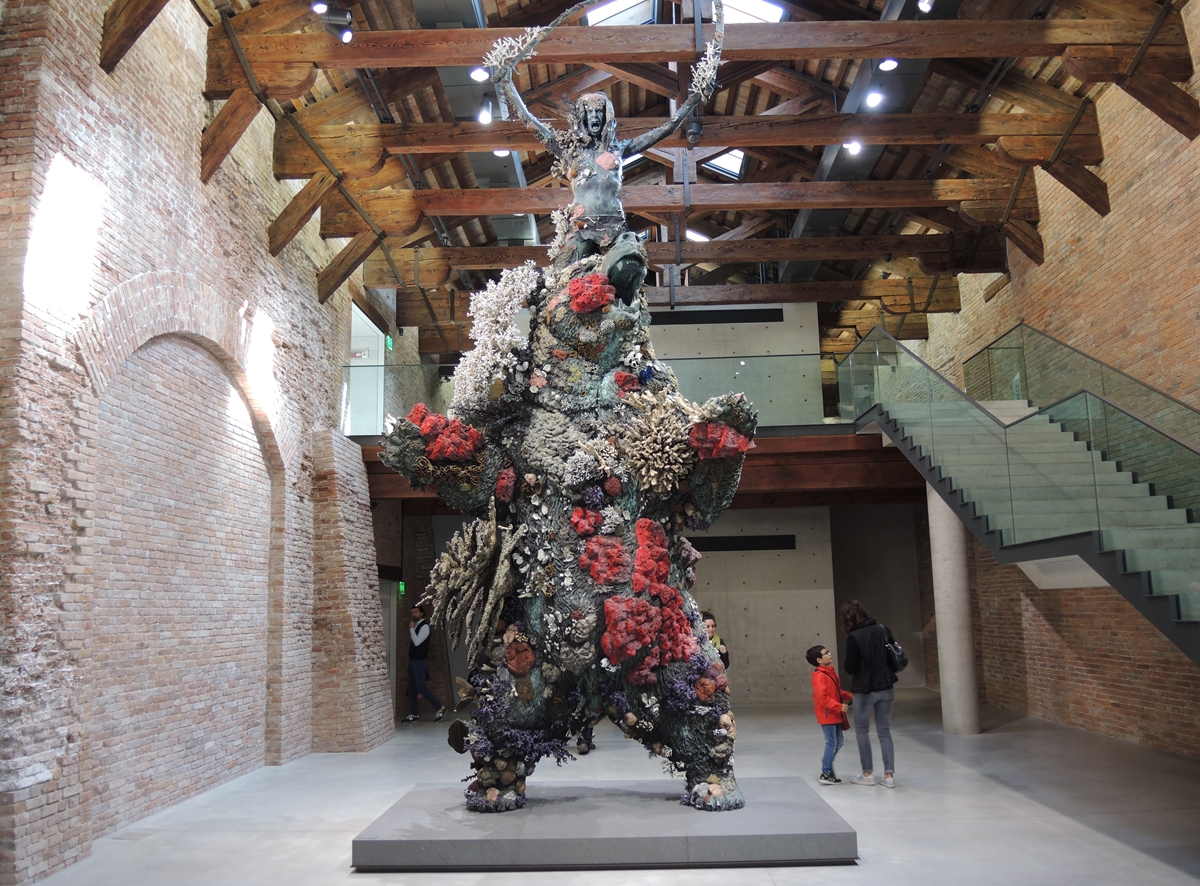
D. Hirst_The Warrior and the Bear
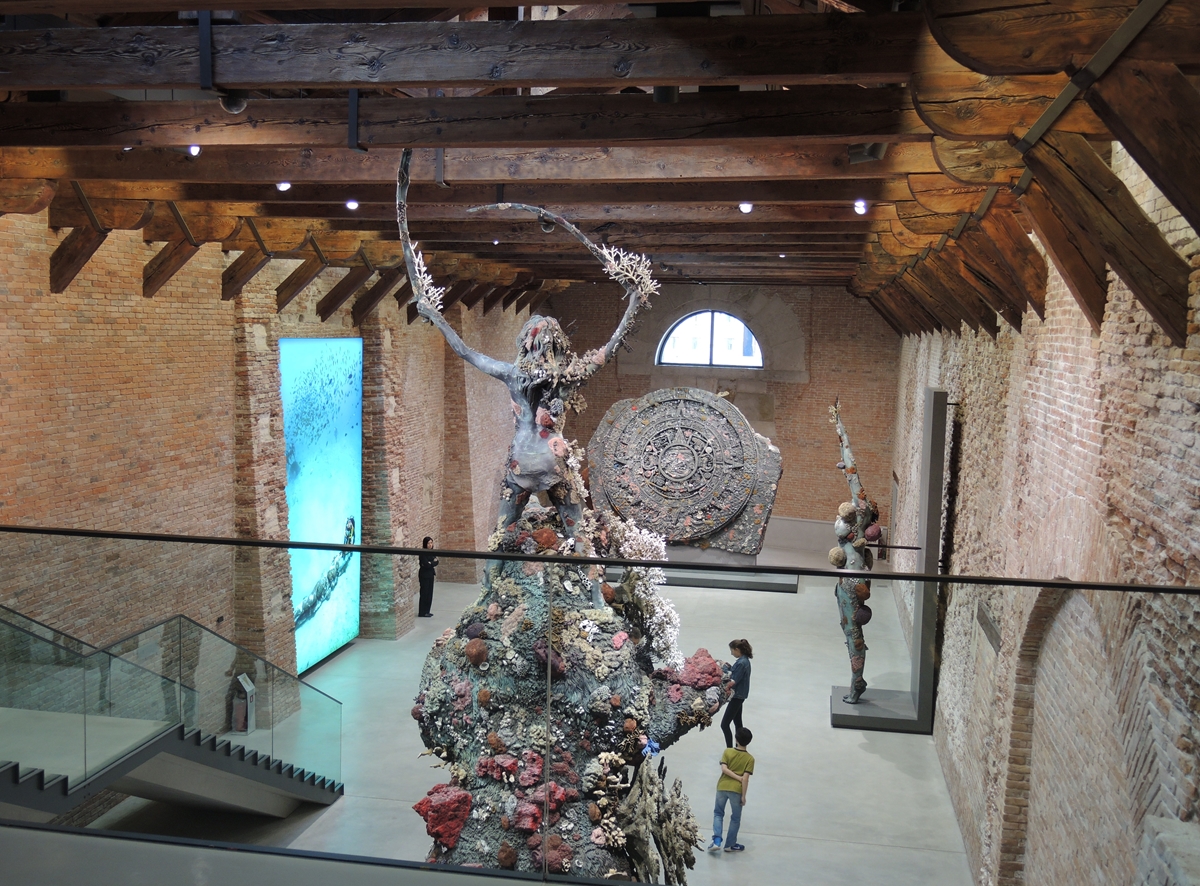
D. Hirst_View of Room 1 – The Warrior and the Bear / Calendar Stone / The Diver
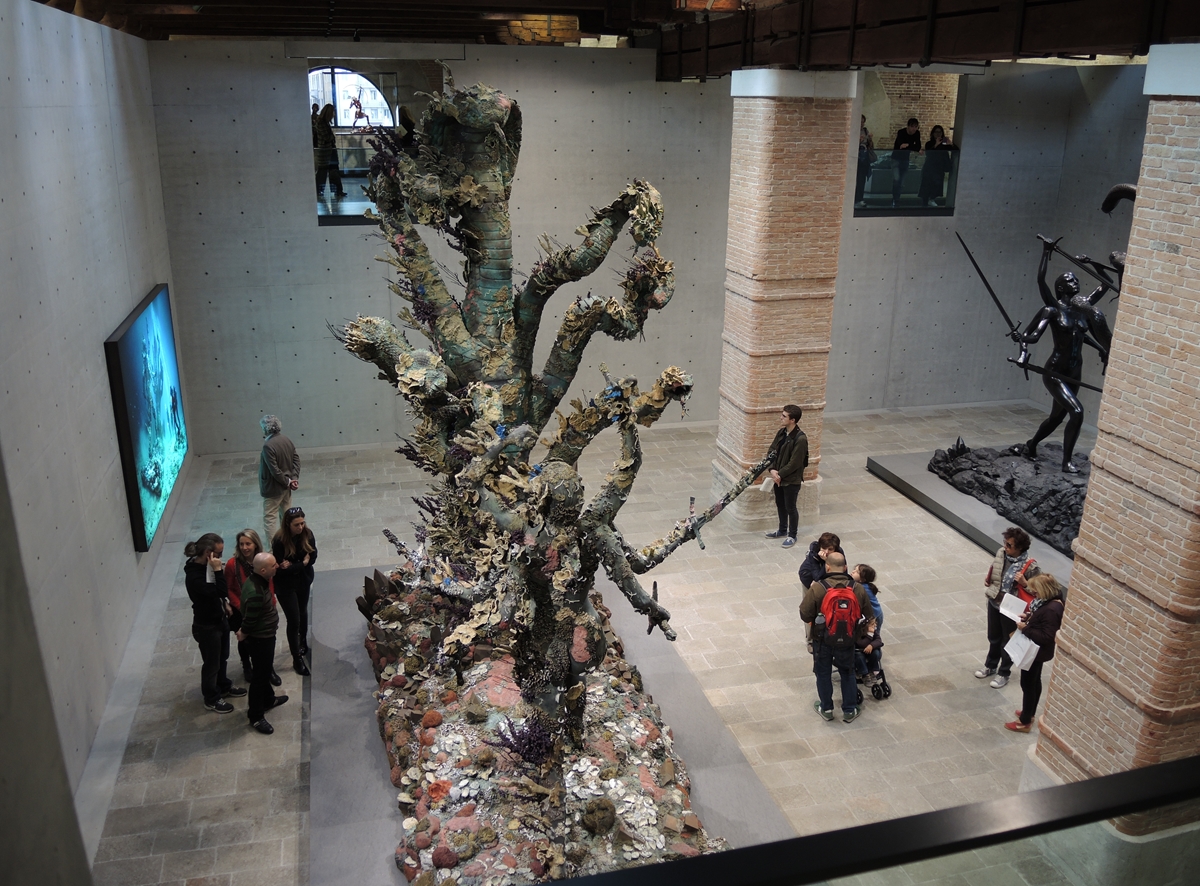
D. Hirst_Khali and the Hidra
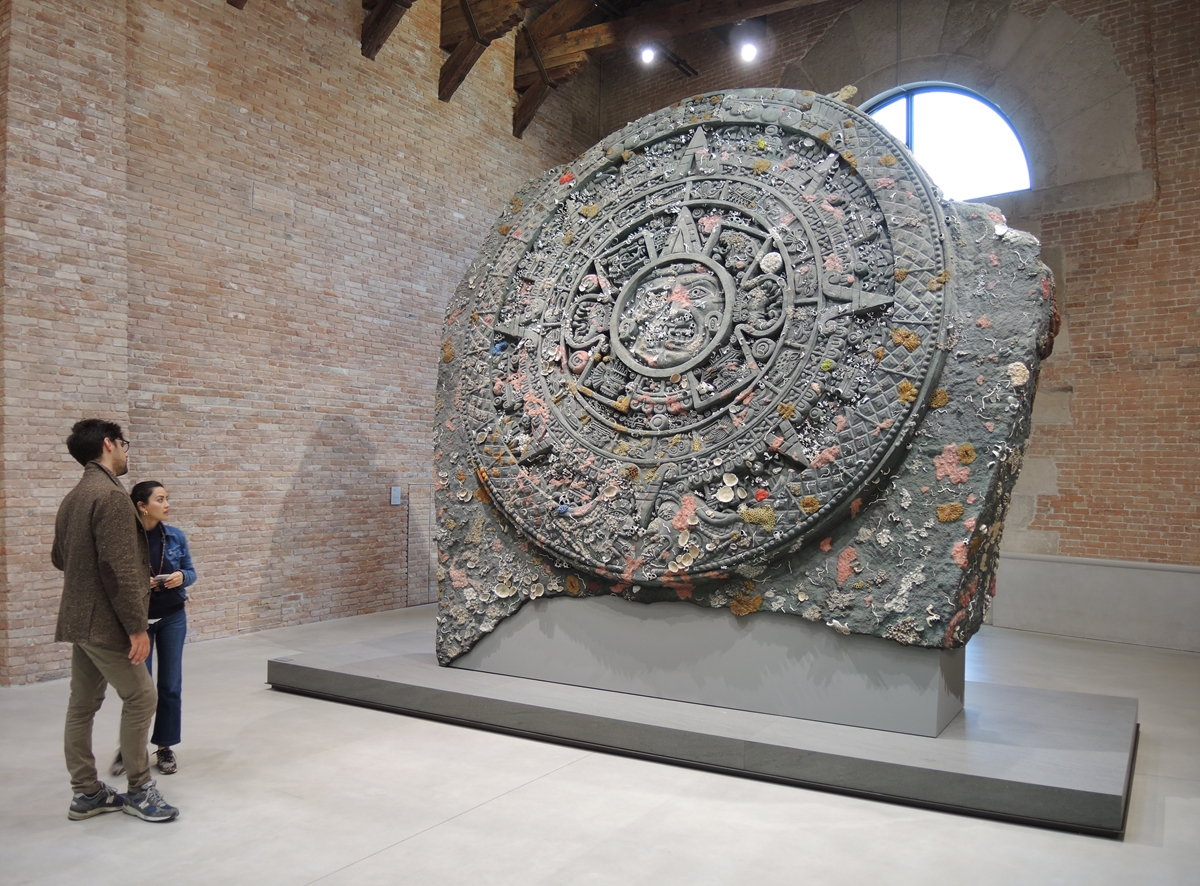
D. Hirst_Calendar Stone
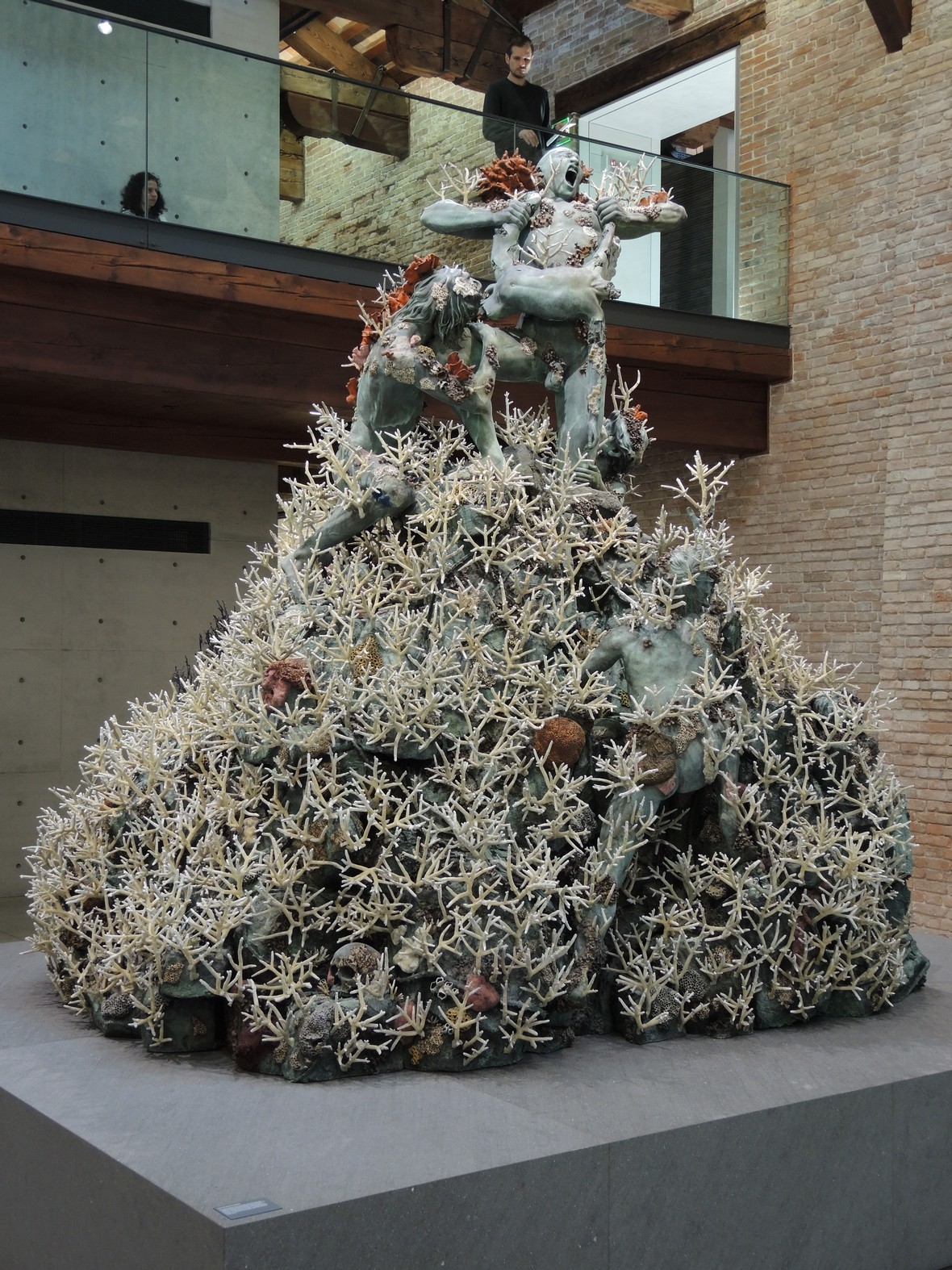
D. Hirst_Cronos devouring his children
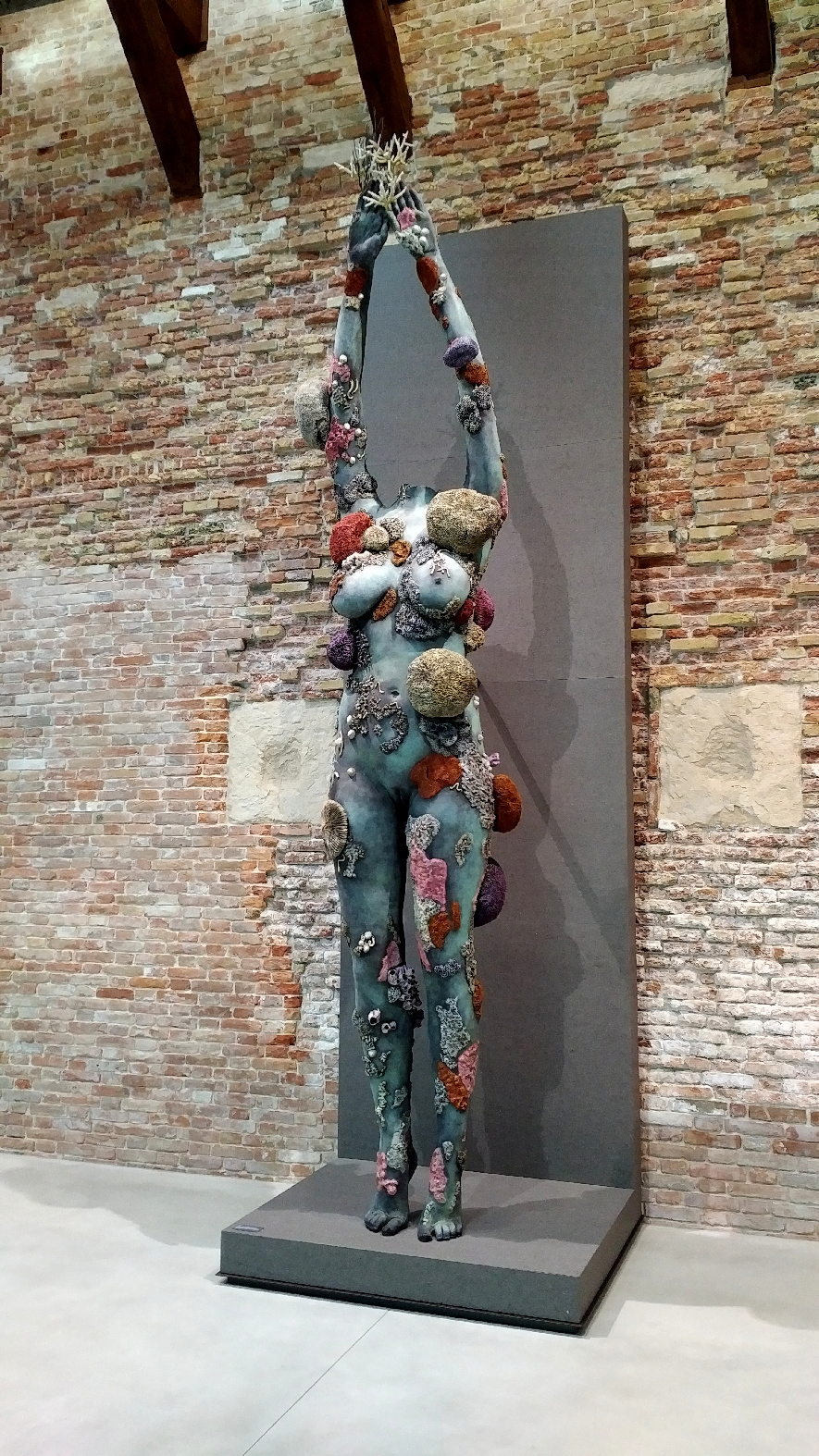
D. Hirst_The Diver
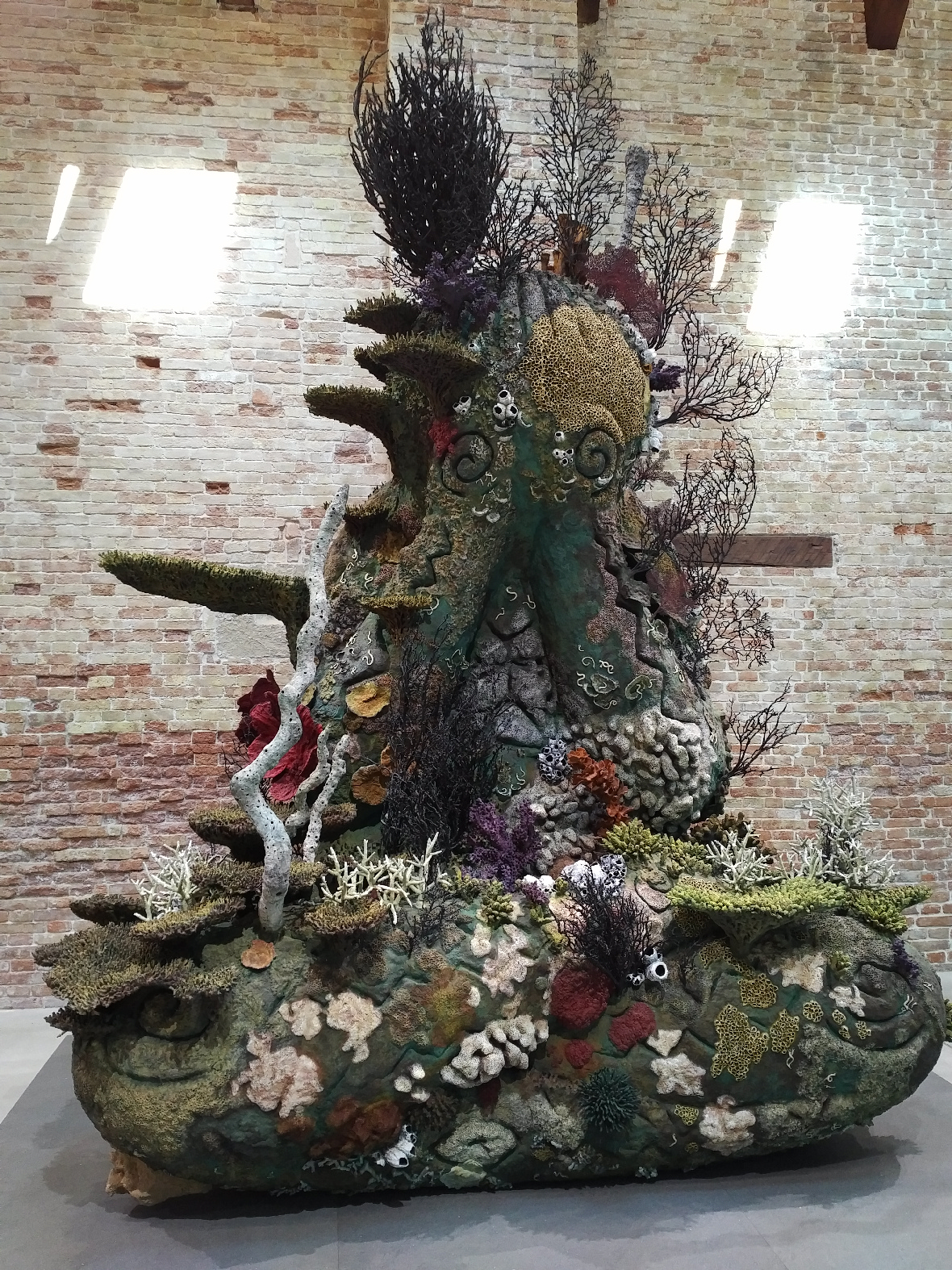
D. Hirst_The Monk
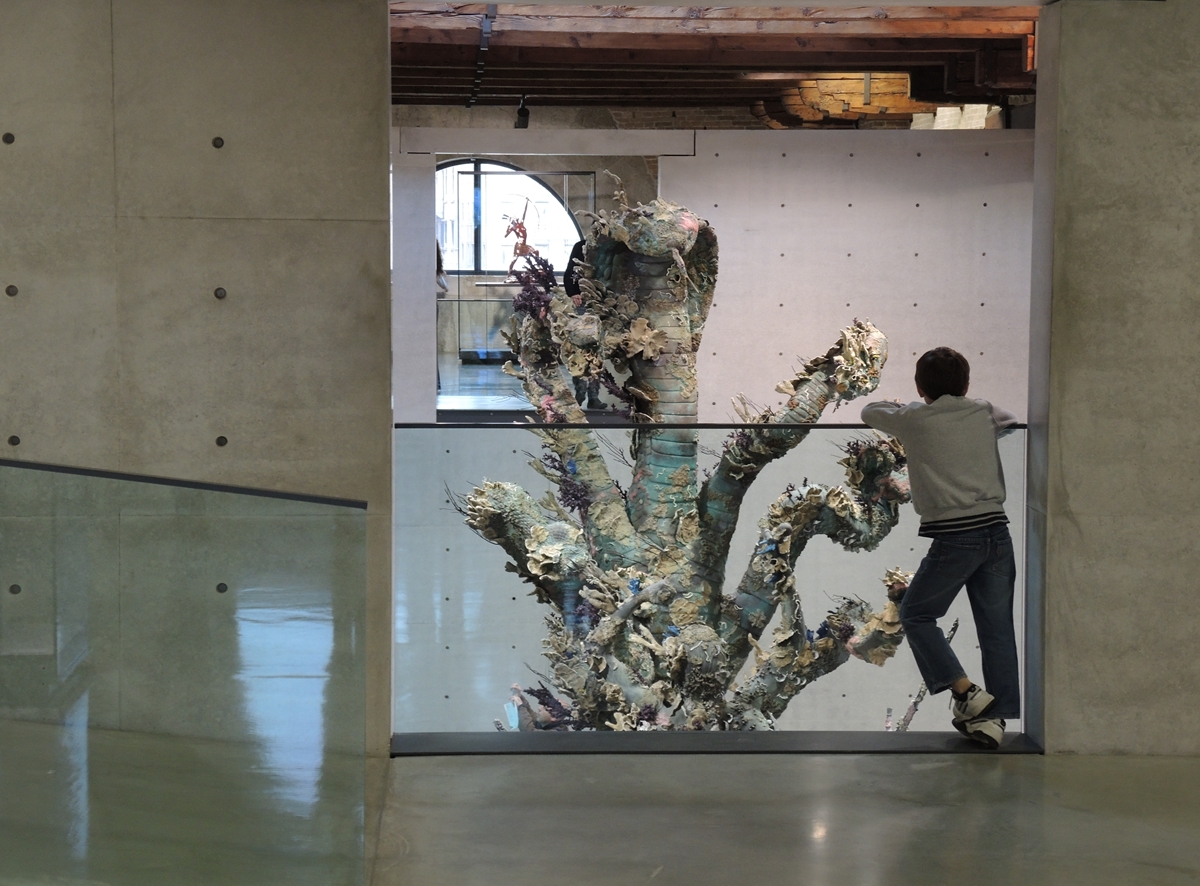
D. Hirst_Kali and the Hidra (detail)
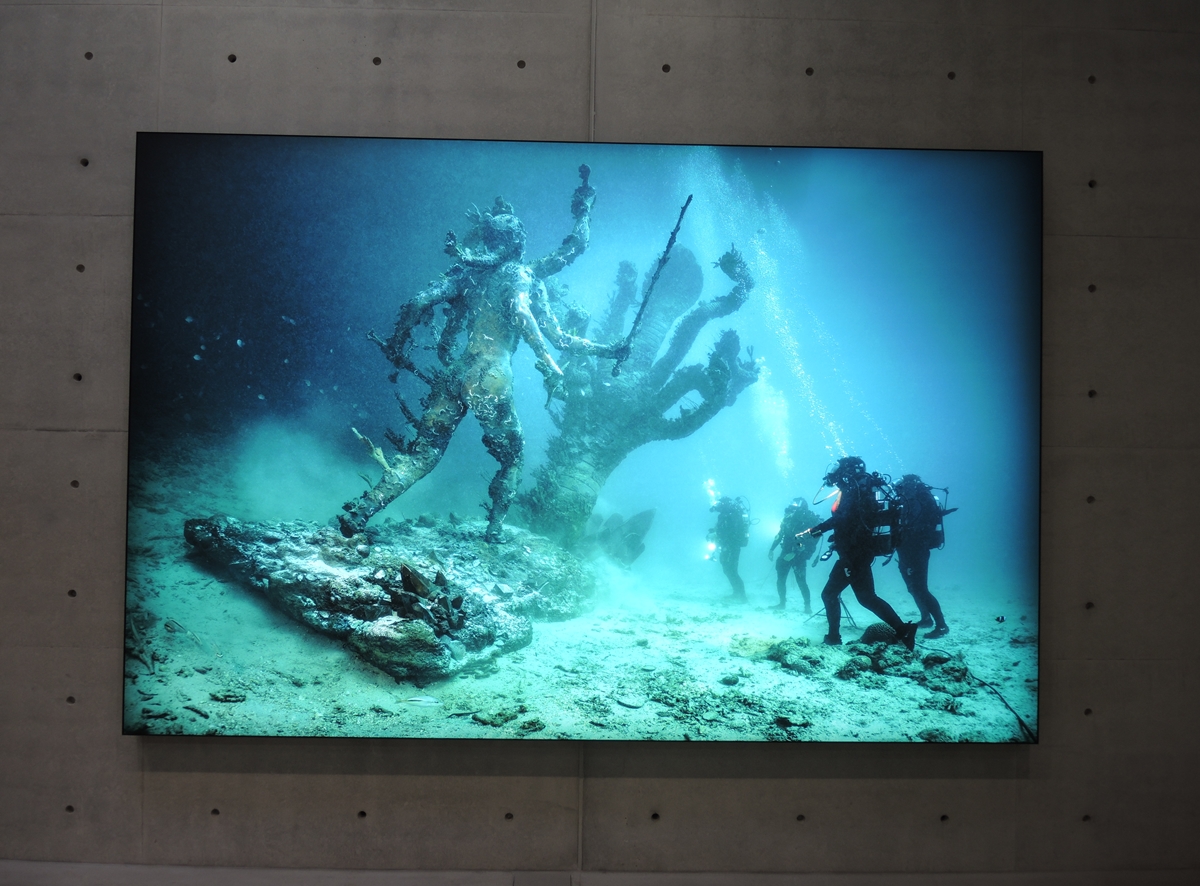
D. Hirst_Hydra and Kali at the wreckage site
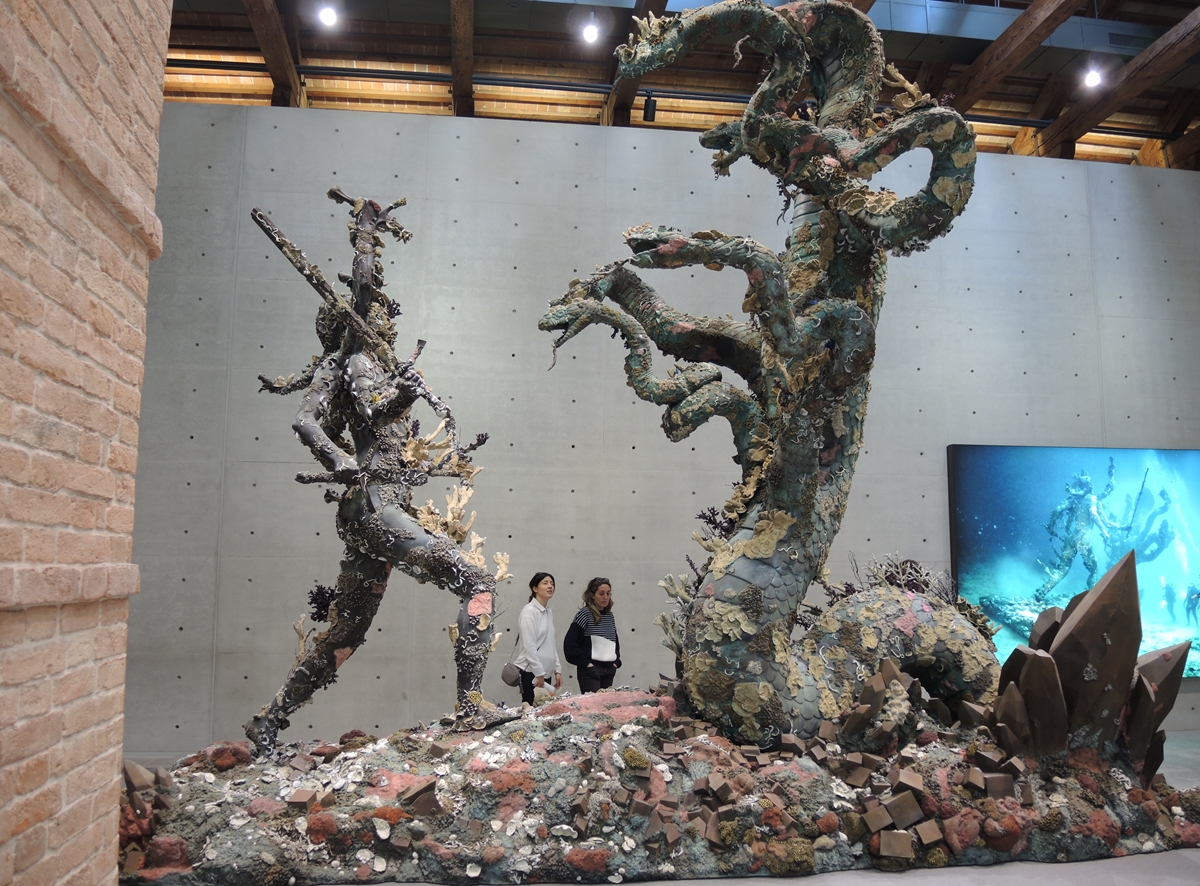
D. Hirst_Hydra and Kali
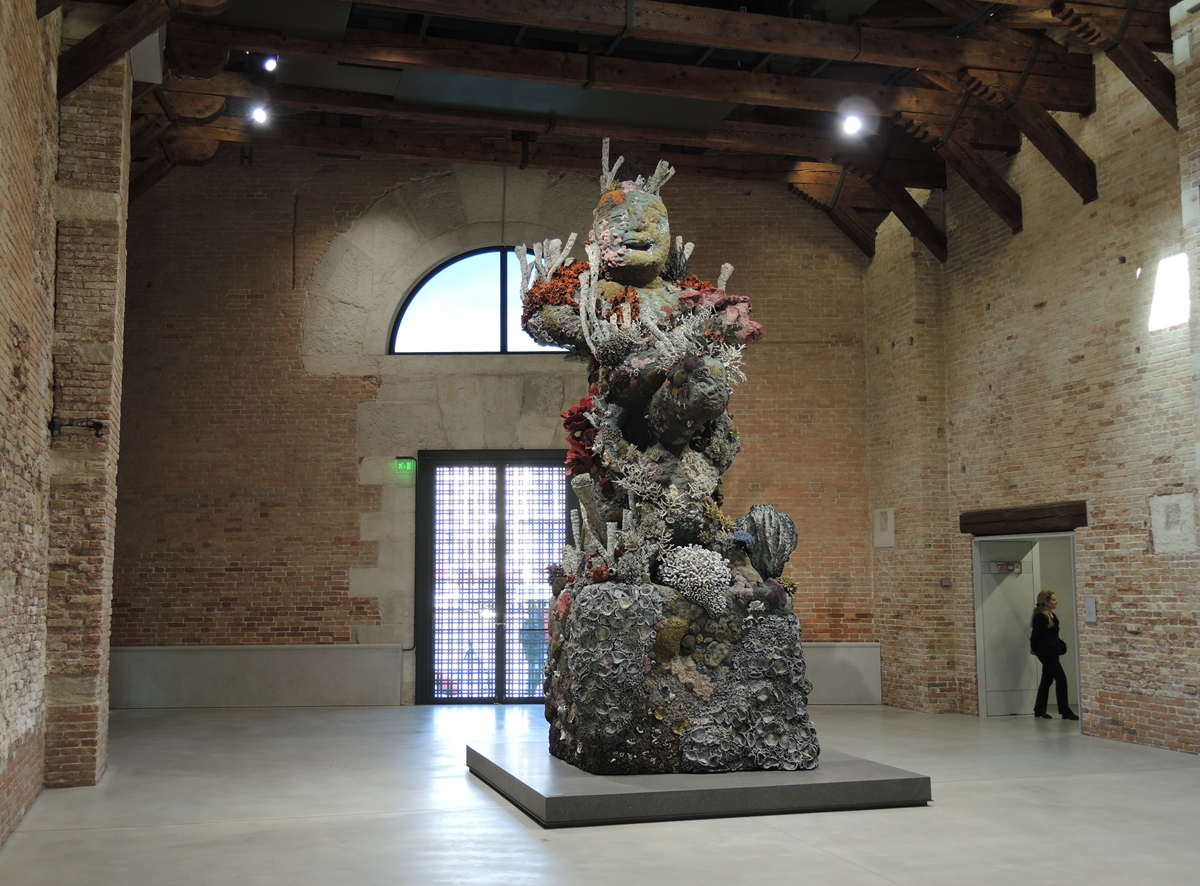
D. Hirst_Two figures with drum

D. Hirst_Two figures with a drum at the wreckage site
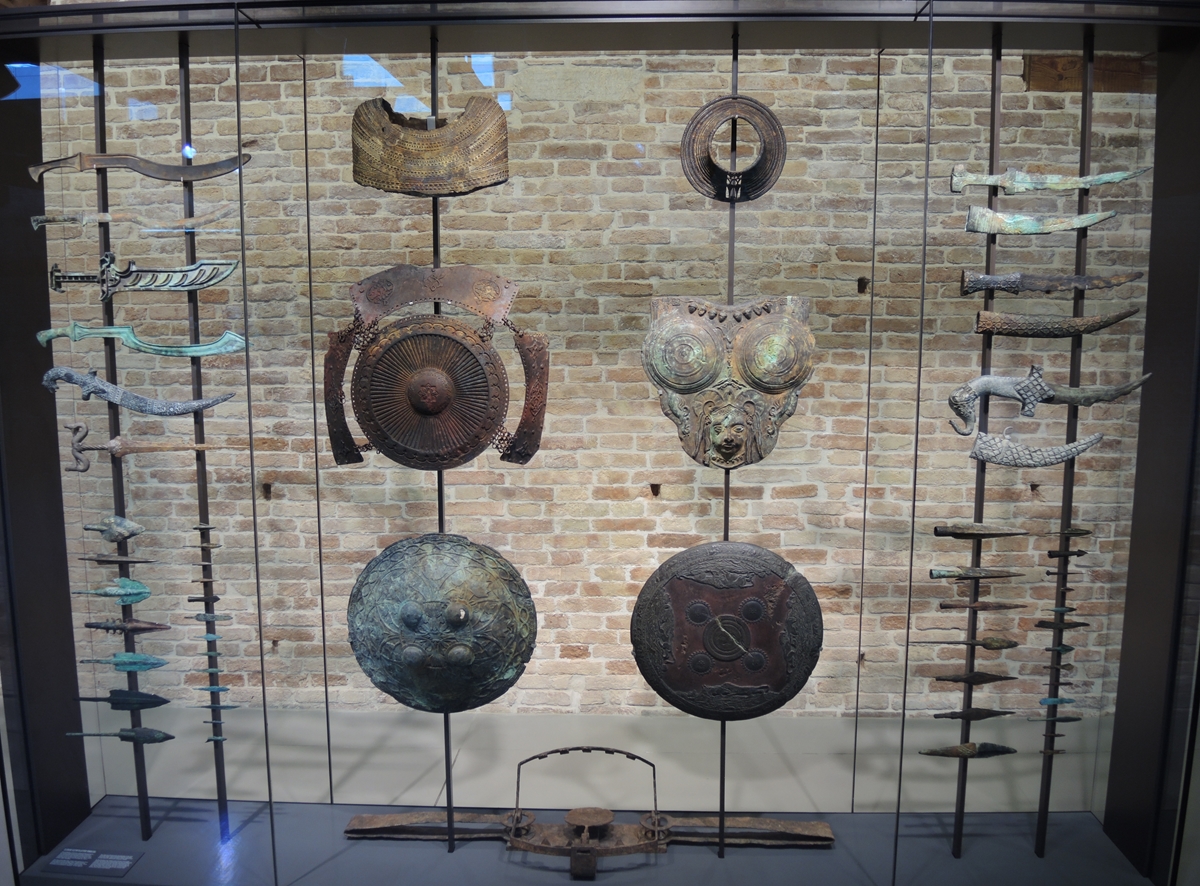
D. Hirst_A collection of weapons
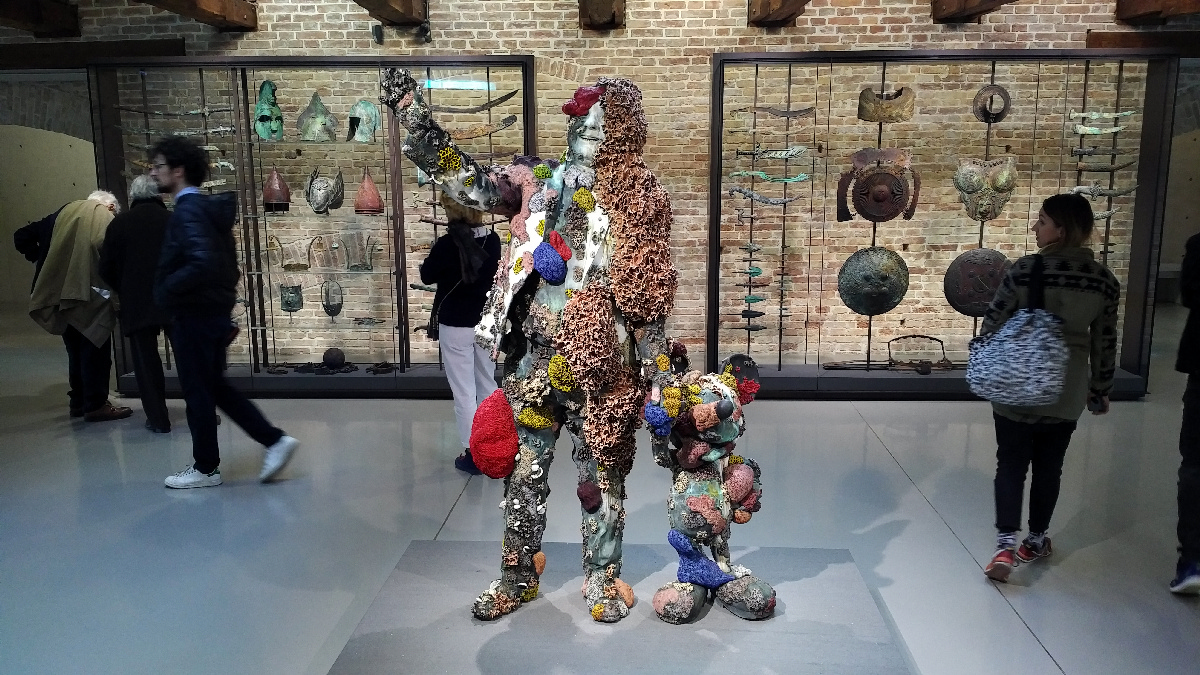
D. Hirst_Collector and friend
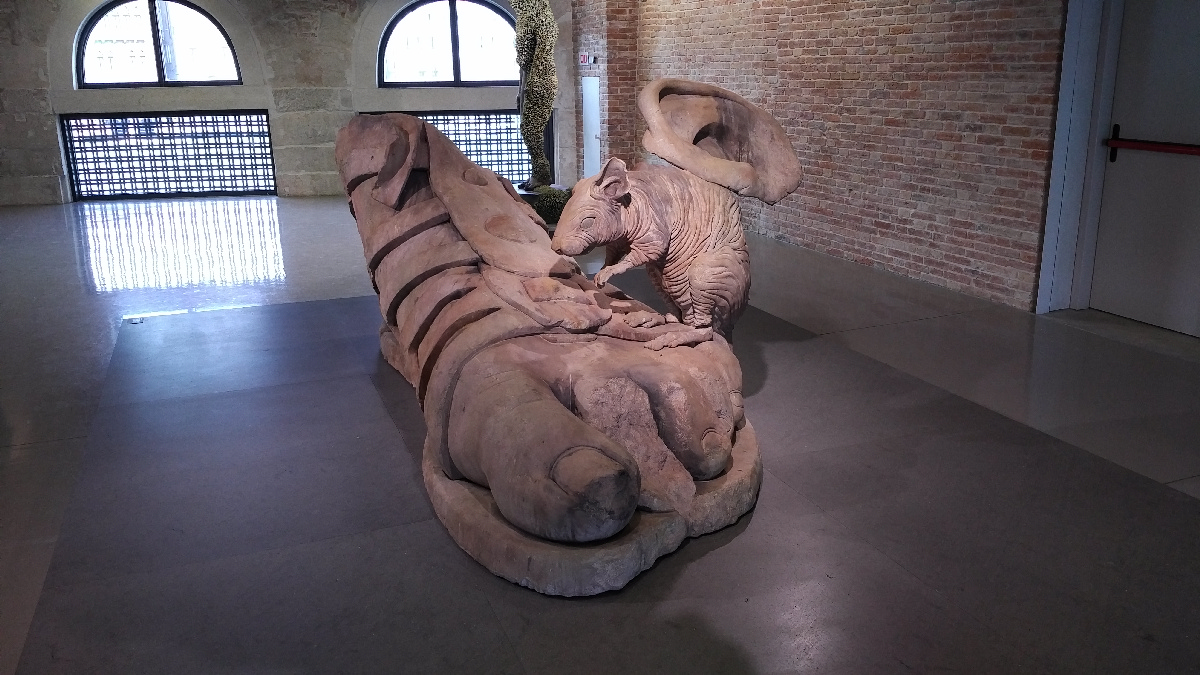
D. Hirst_Remnants of Apollo
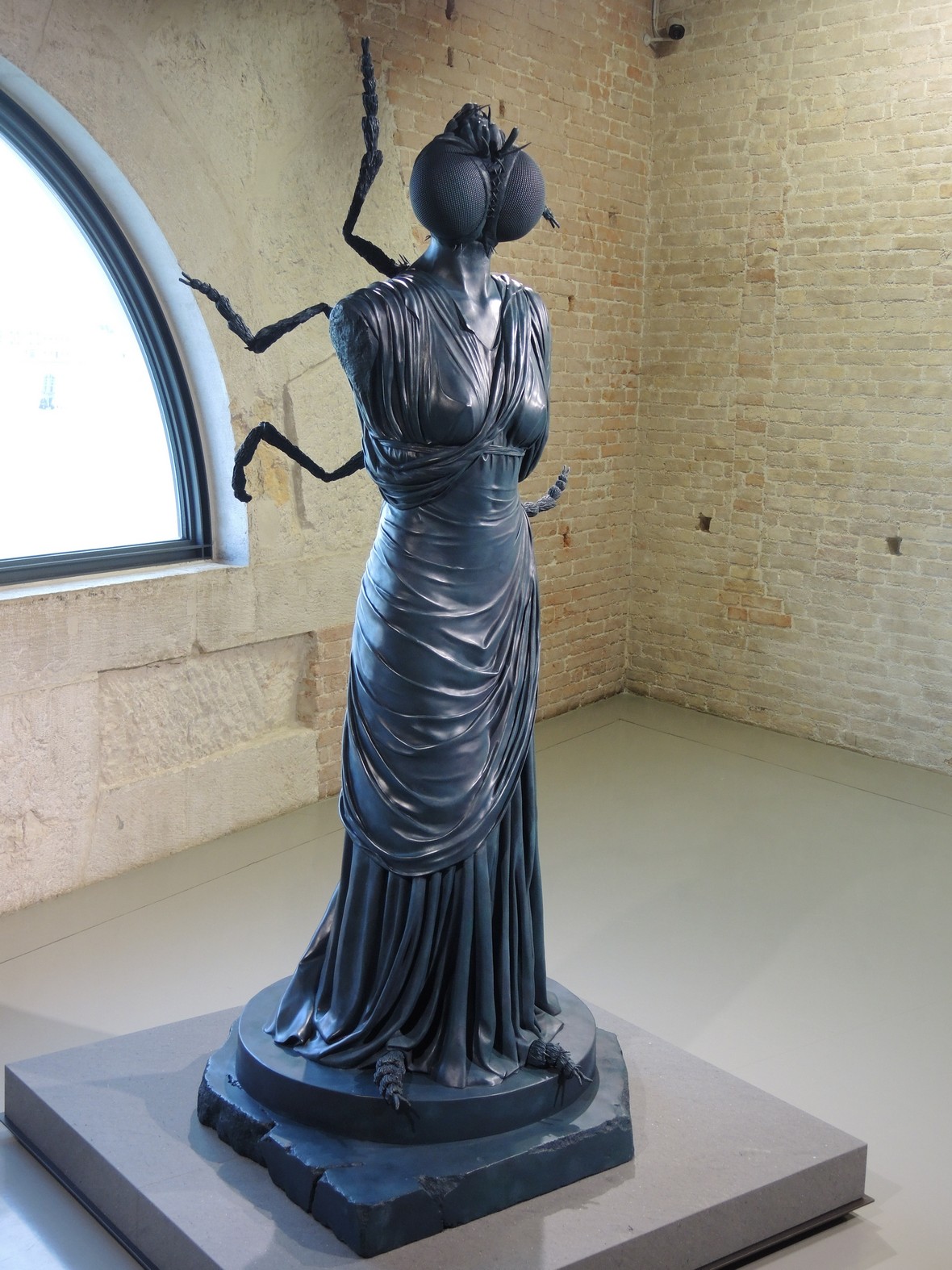
D. Hirst_Metamorphosis
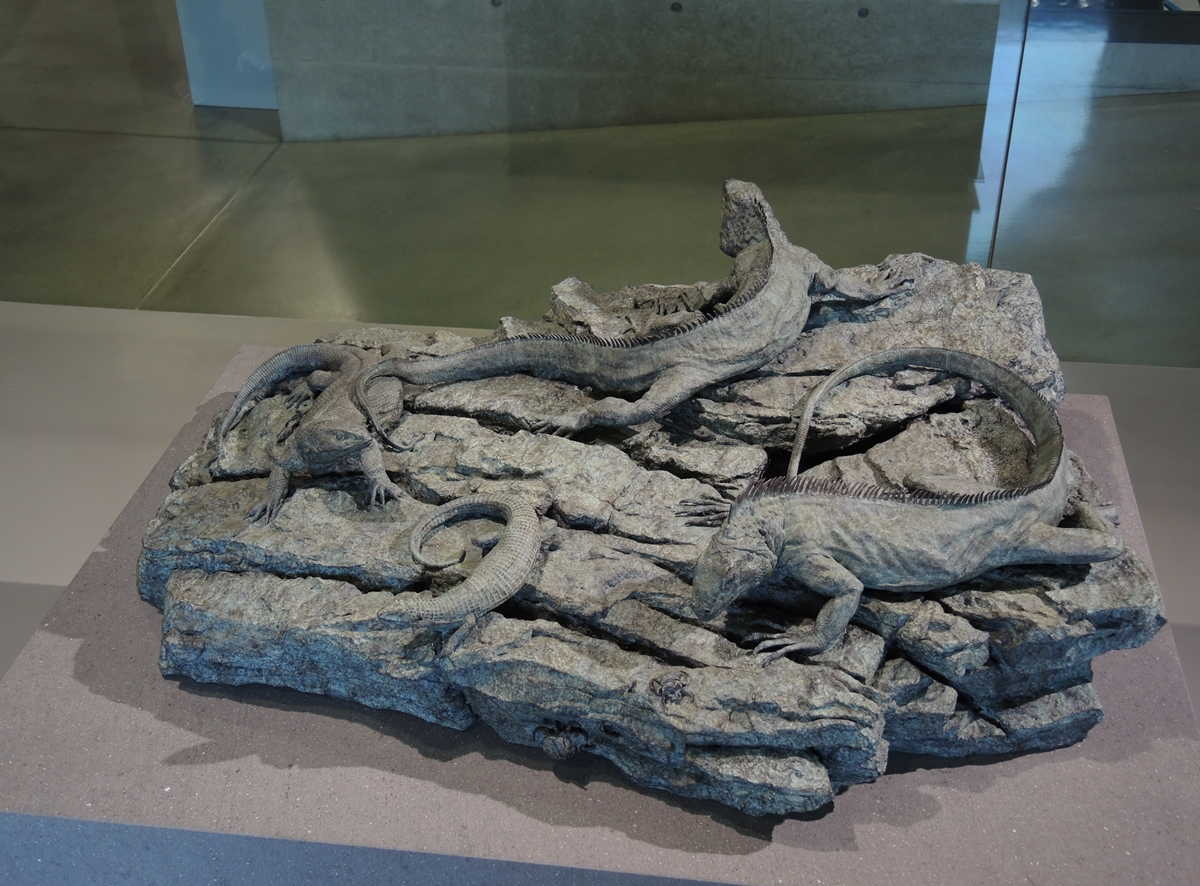
D. Hirst_Four Lizards
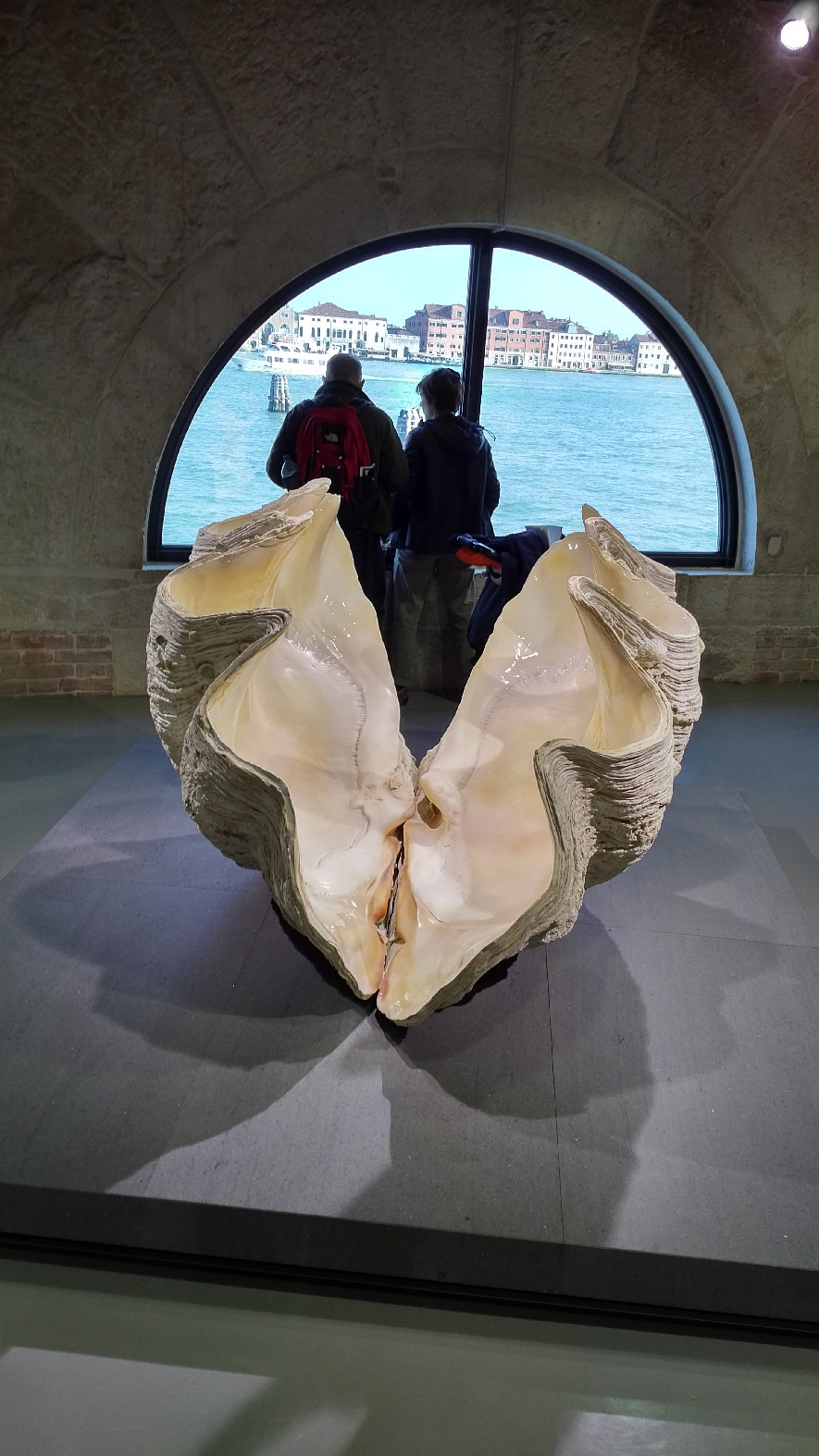
D. Hirst_Giant Clam shell
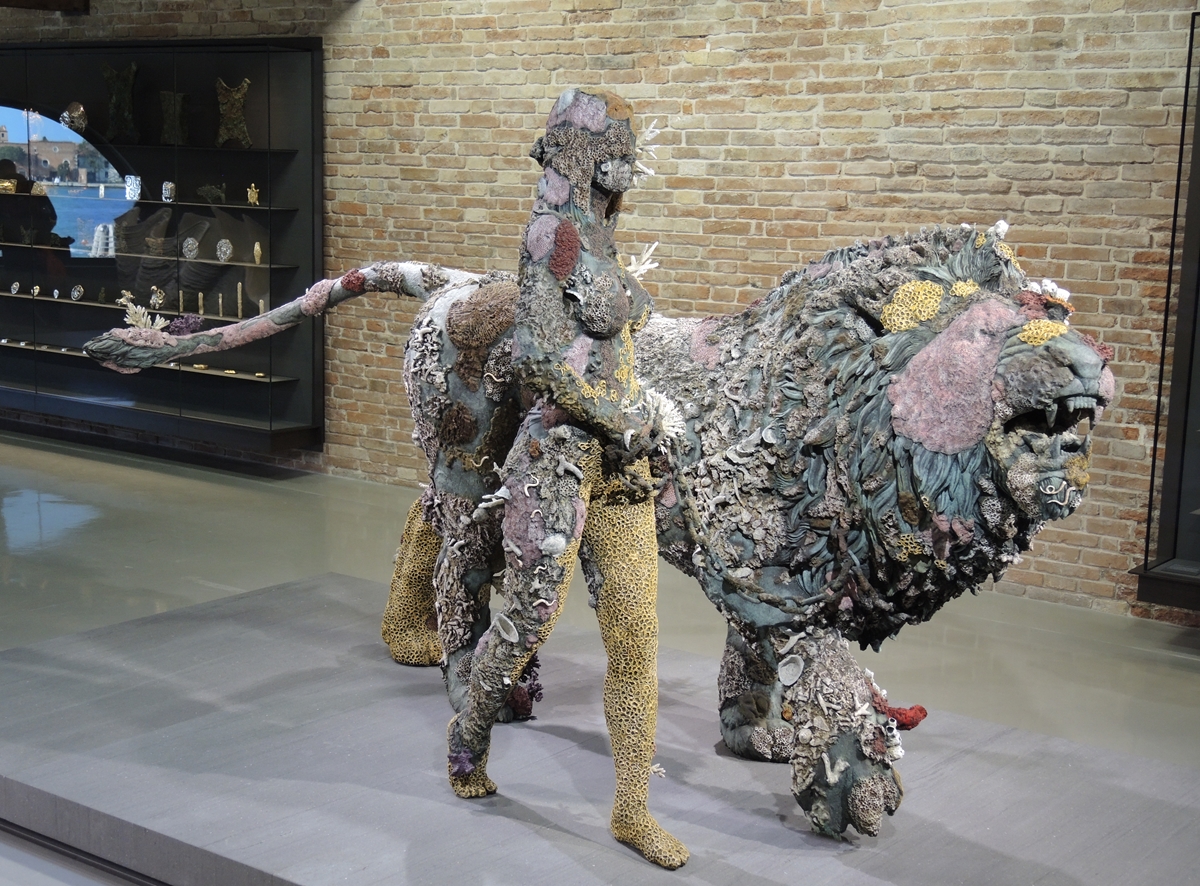
D. Hirst_Lion Woman of Asit Mayor
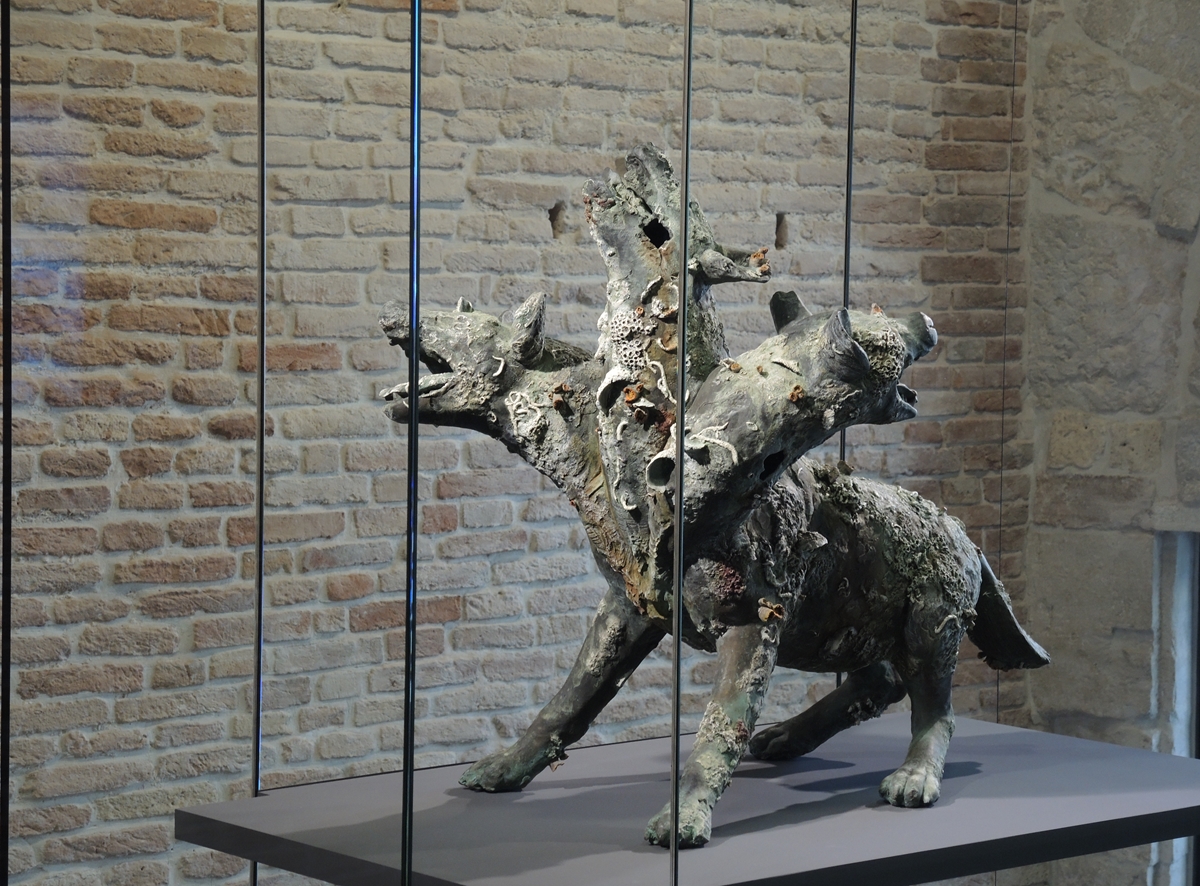
D. Hirst_Cerberus
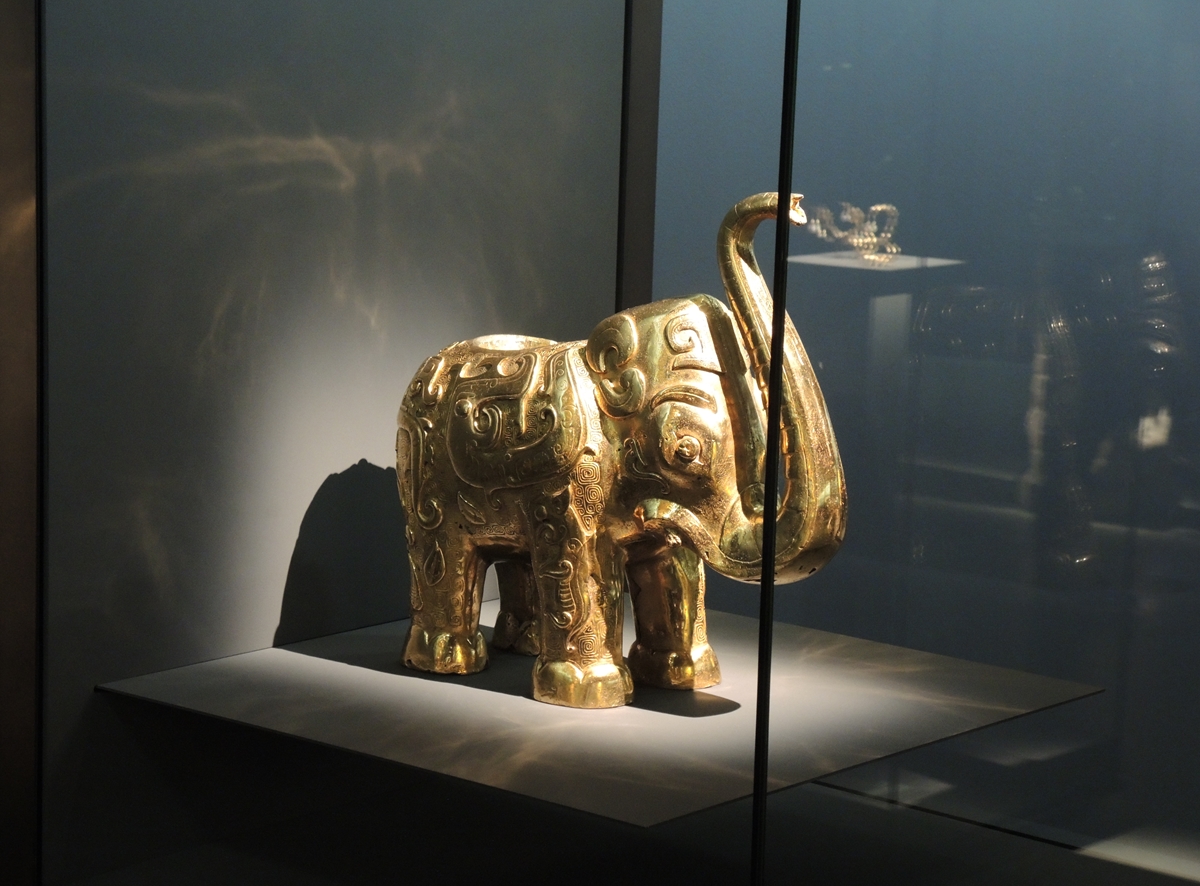
D. Hirst_Golden Elephant
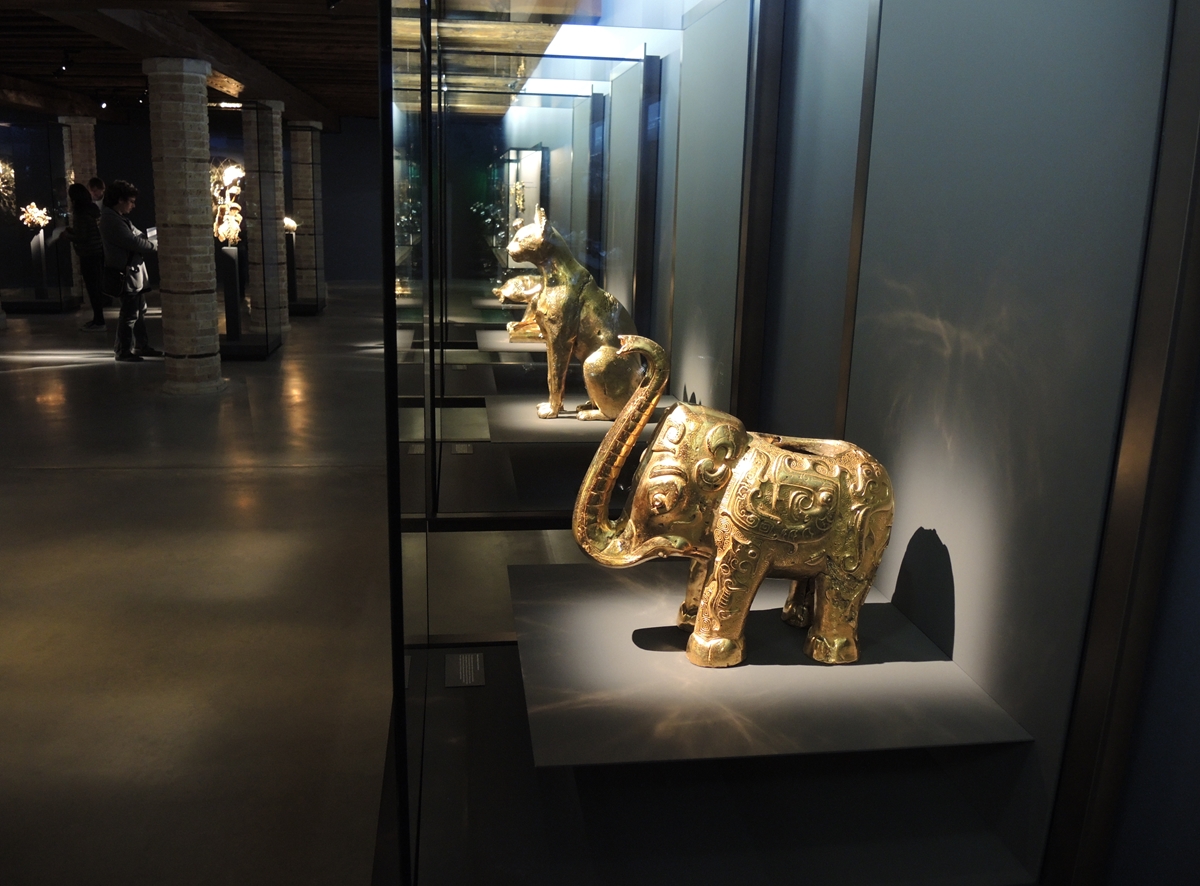
D. Hirst_Golden figures
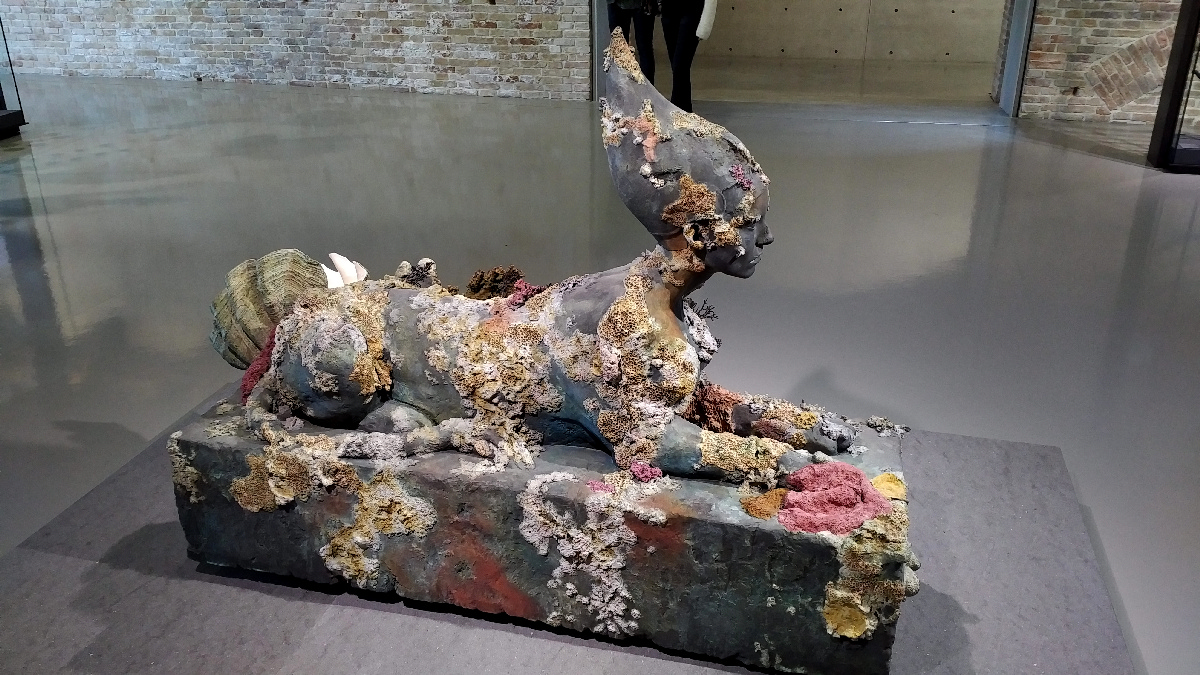
D. Hirst_Sphinx
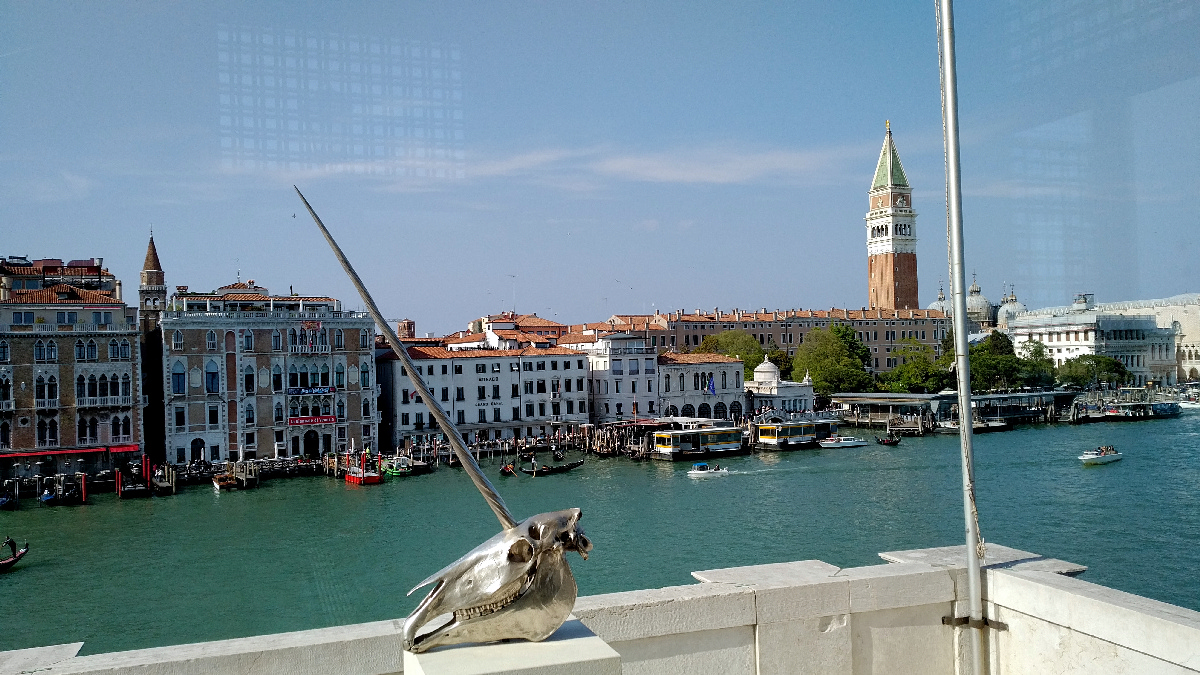
D. Hirst_Skull of a Unicorn
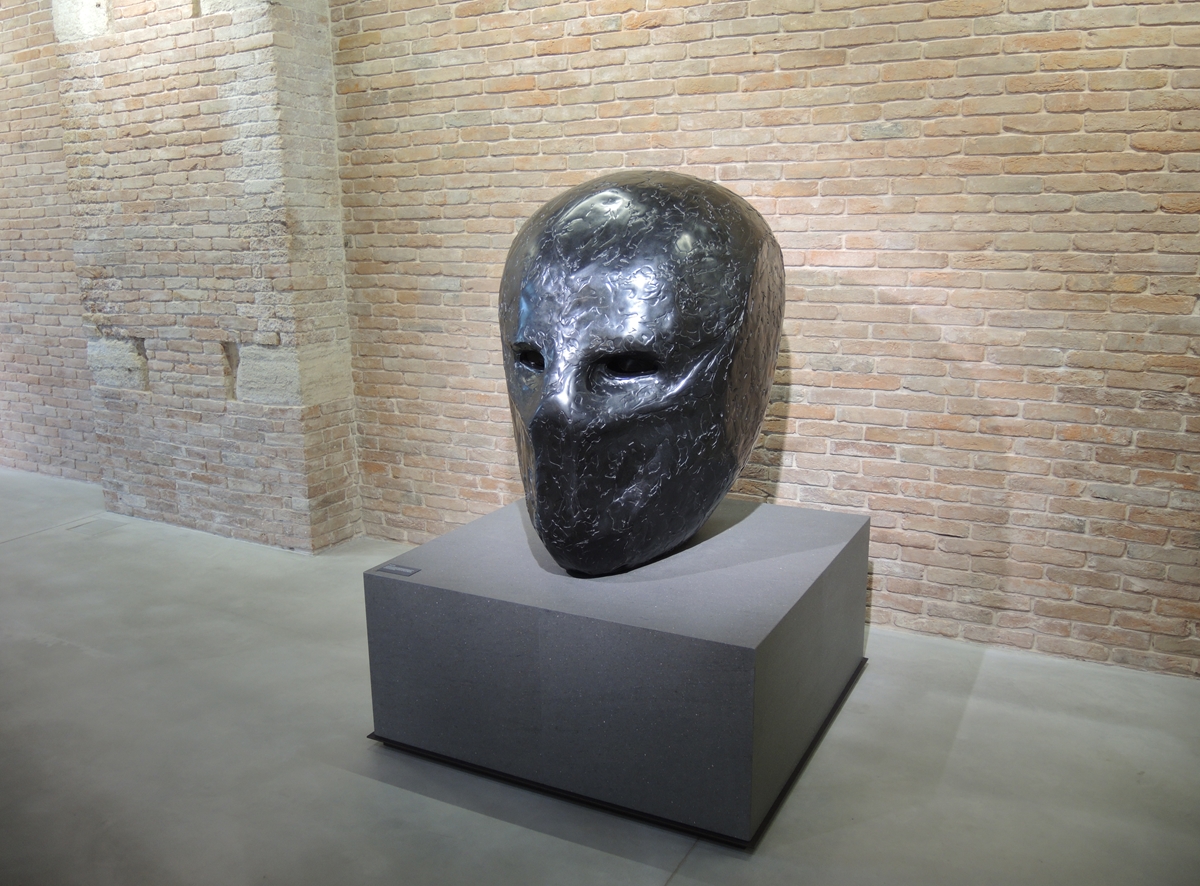
D. Hirst_Death’s head
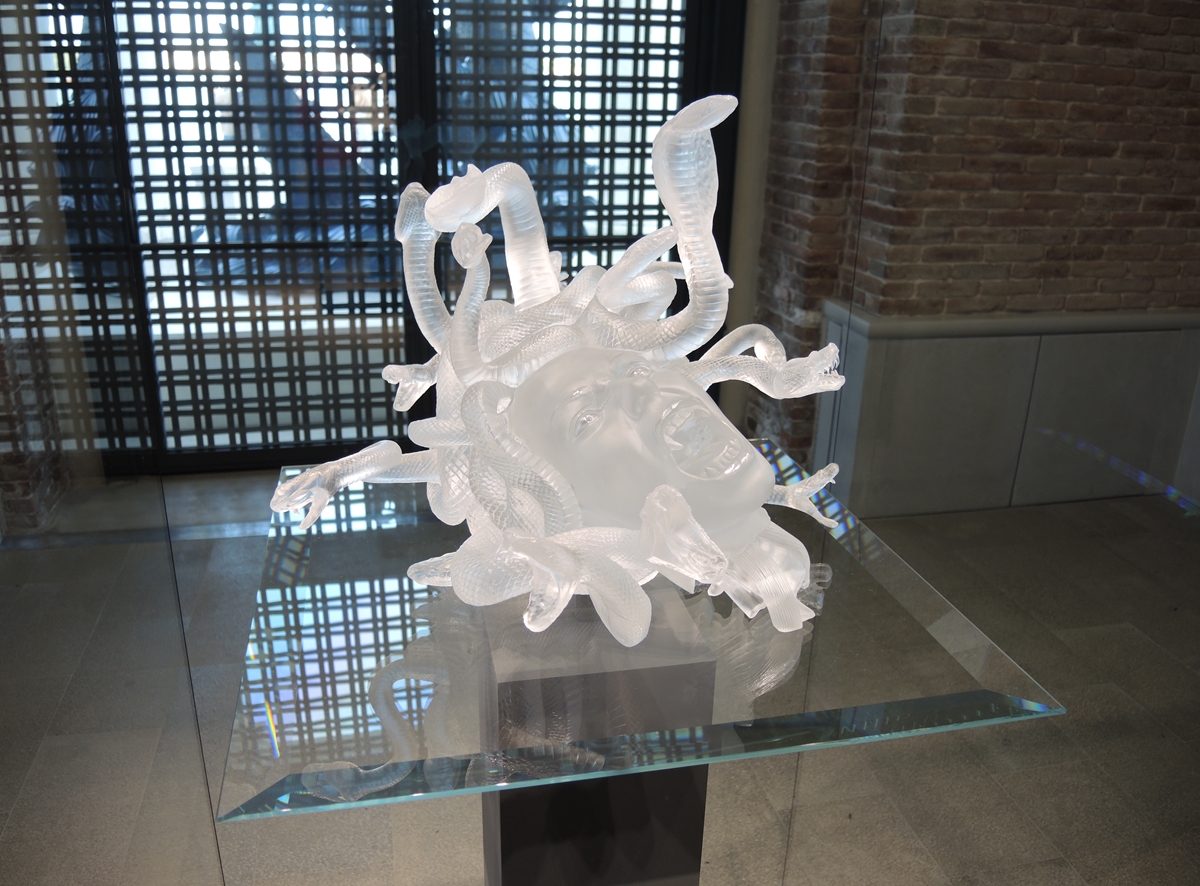
D. Hirst_A severed head of a Medusa.
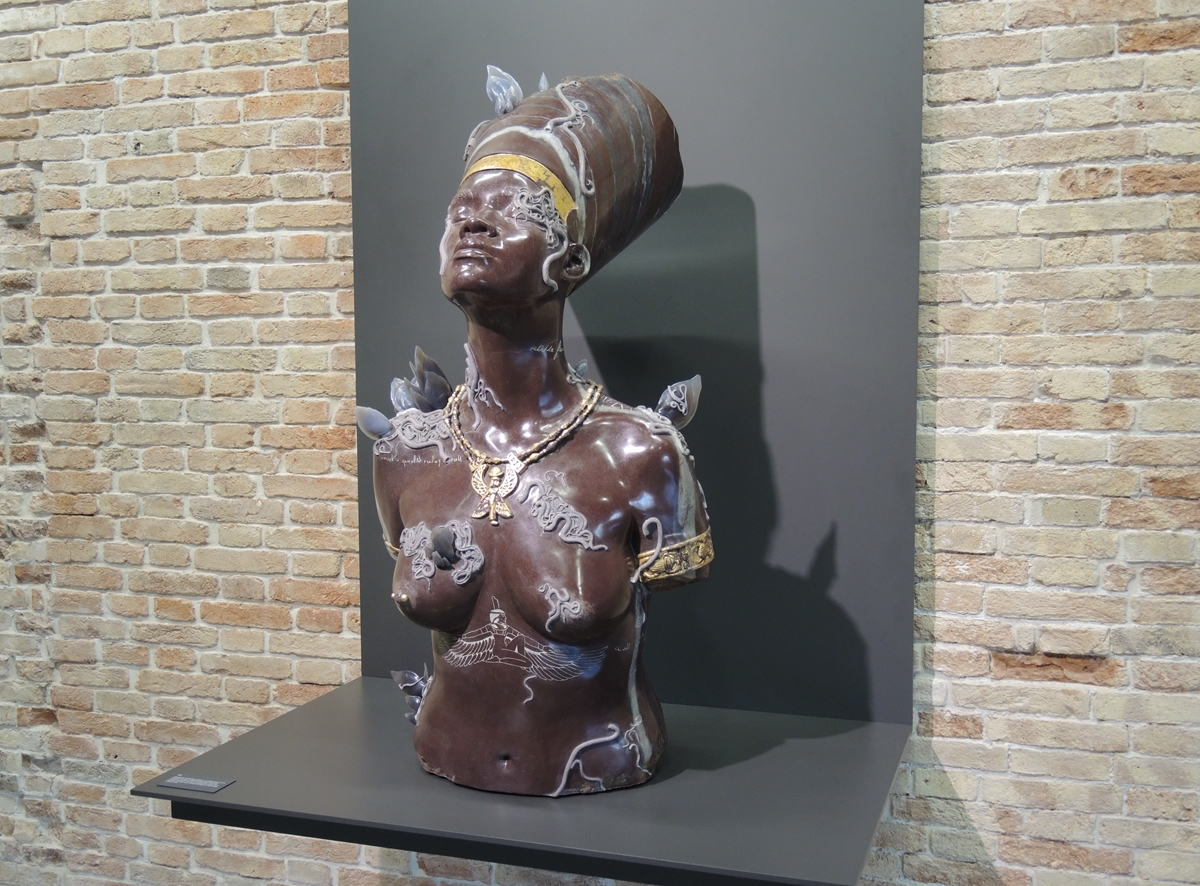
D. Hirst_Aten
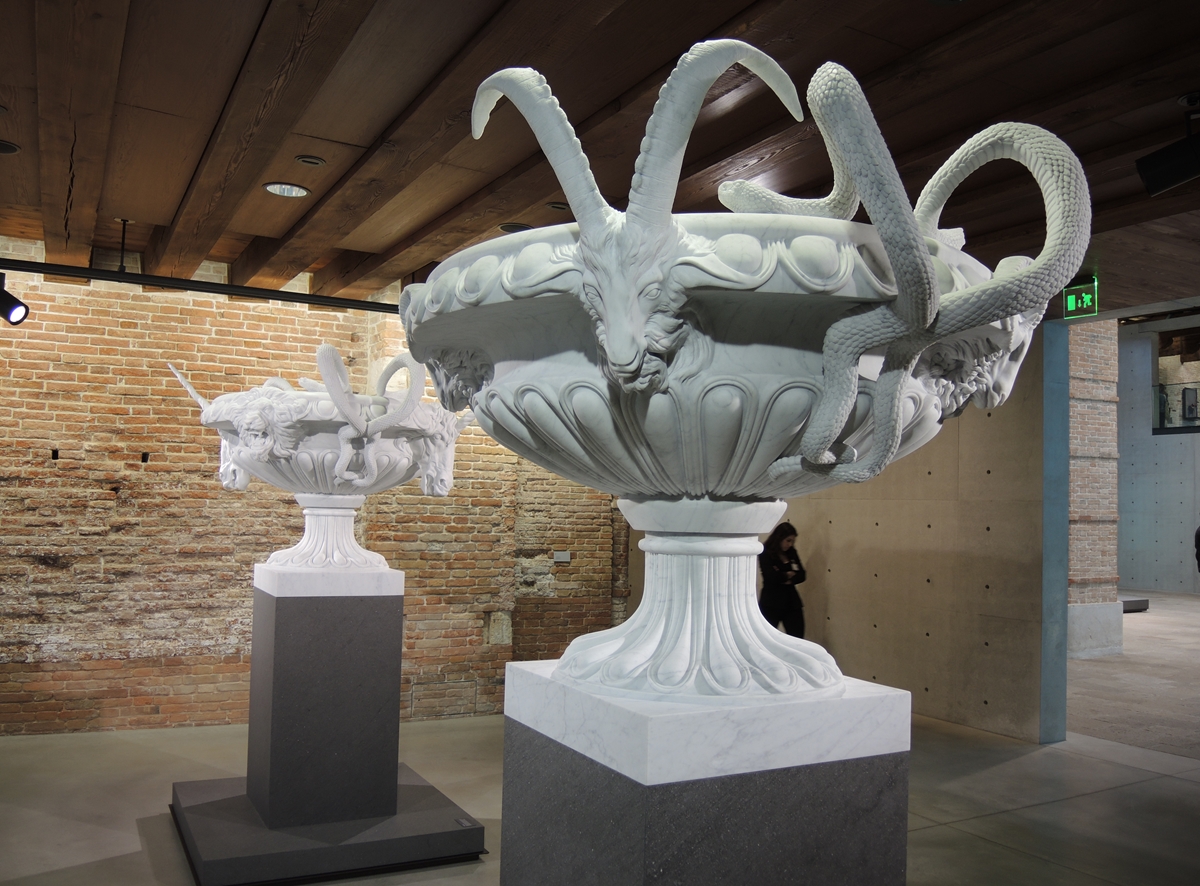
D. Hirst_ Two large urns
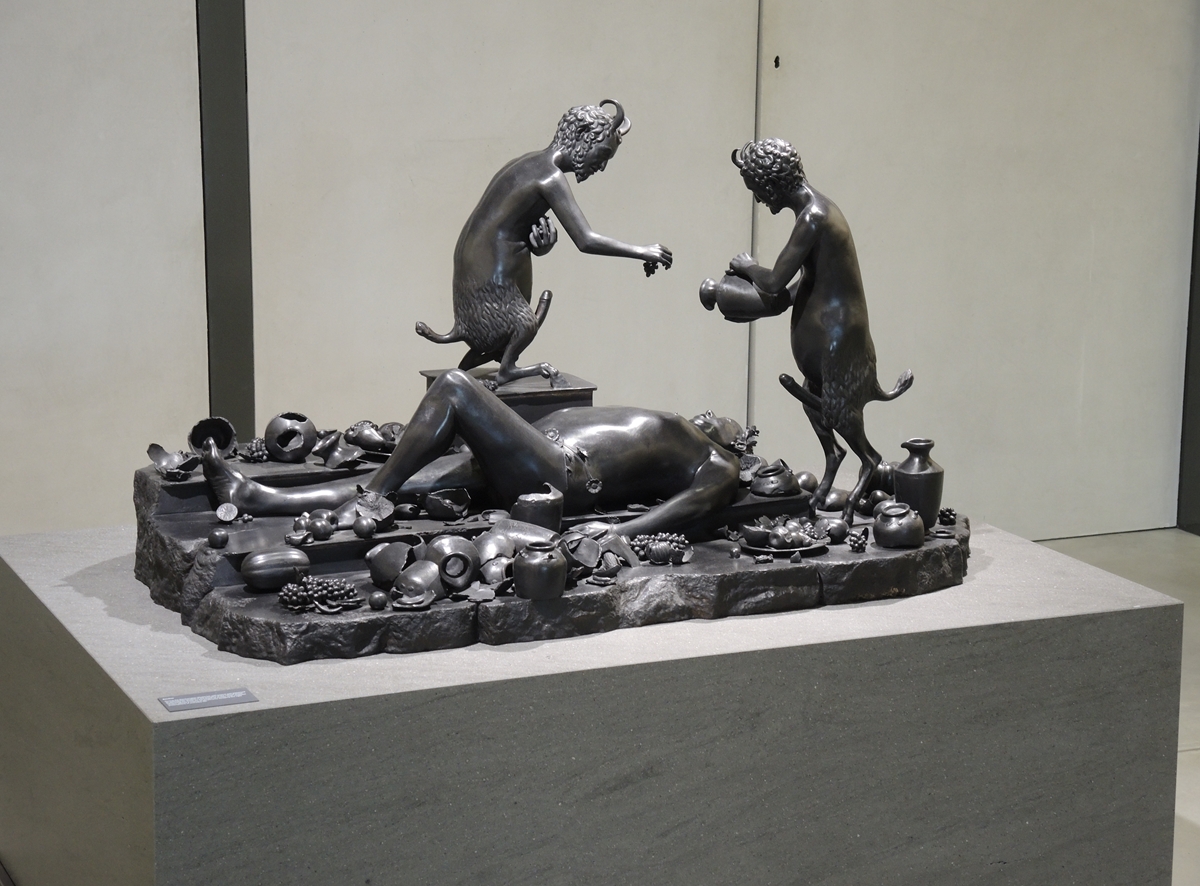
D. Hirst_Bacchus
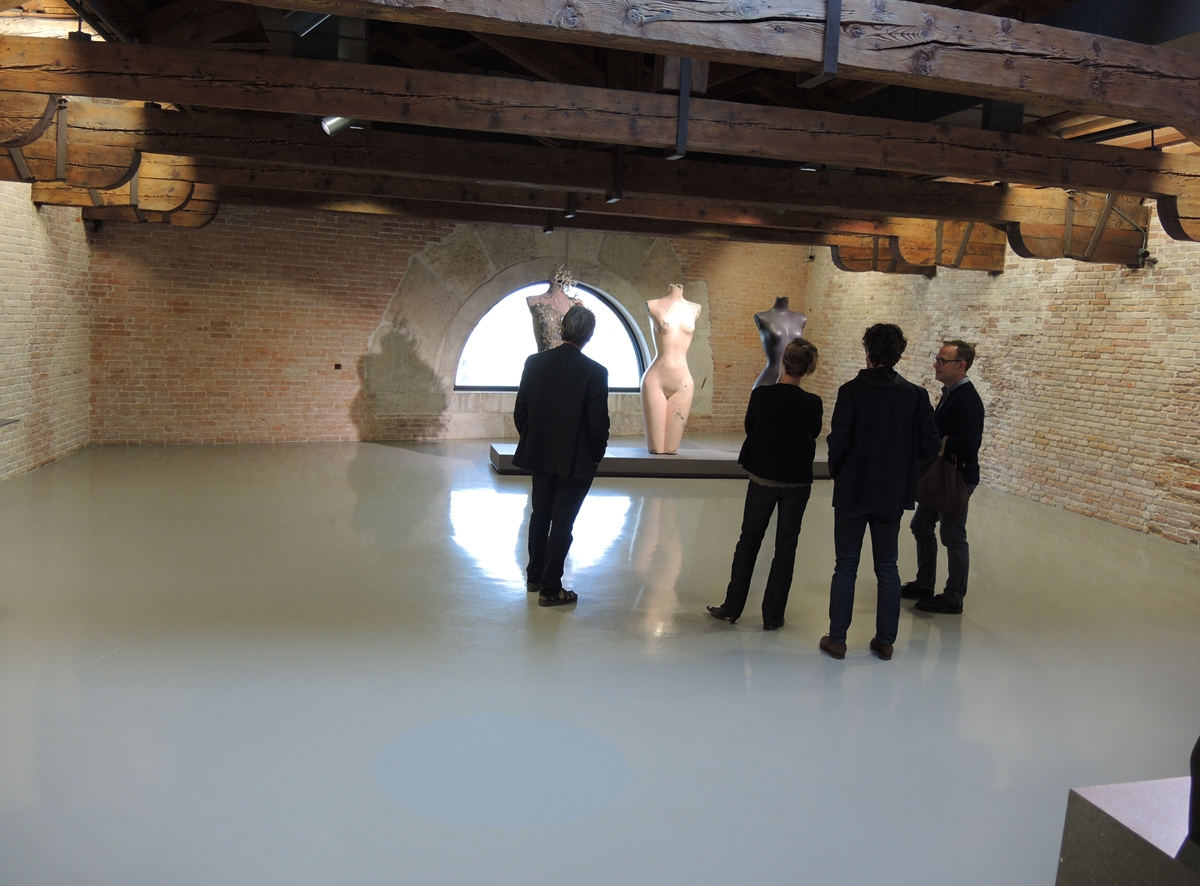
D. Hirst_Three Grecian Nudes
Pictures of the exhibit at Palazzo Grassi venue – Pinault Foundation
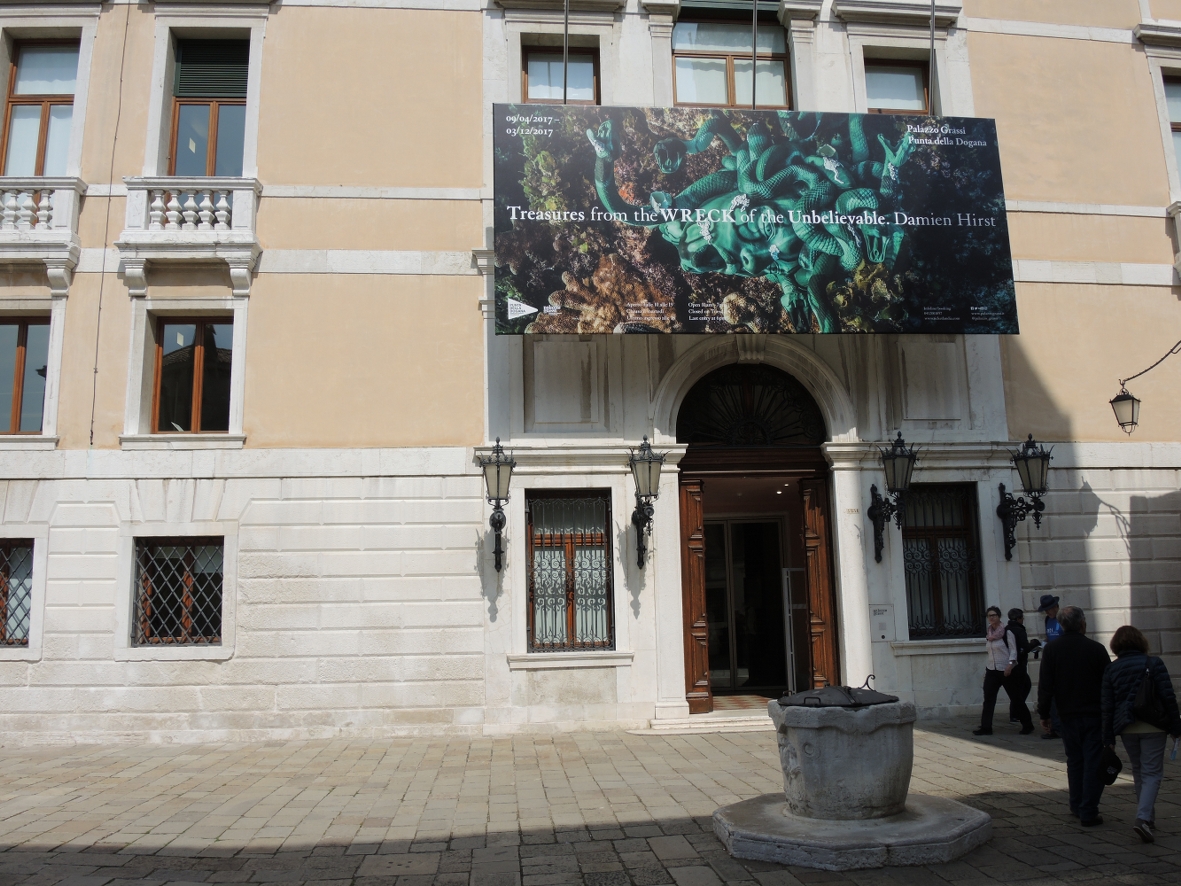
Entrance to Palazzo Grassi
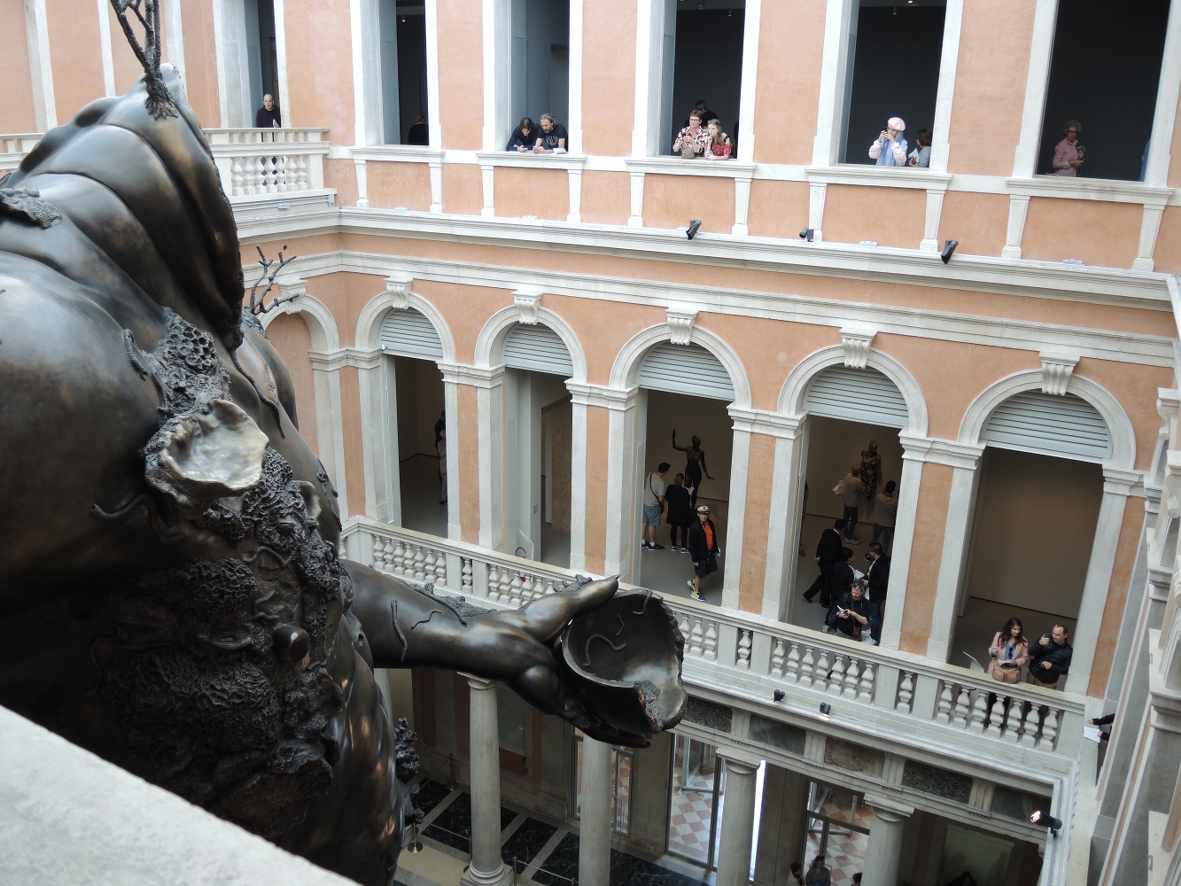
Exhibit interior Palazzo Grassi

D. Hirst_Head of Demon
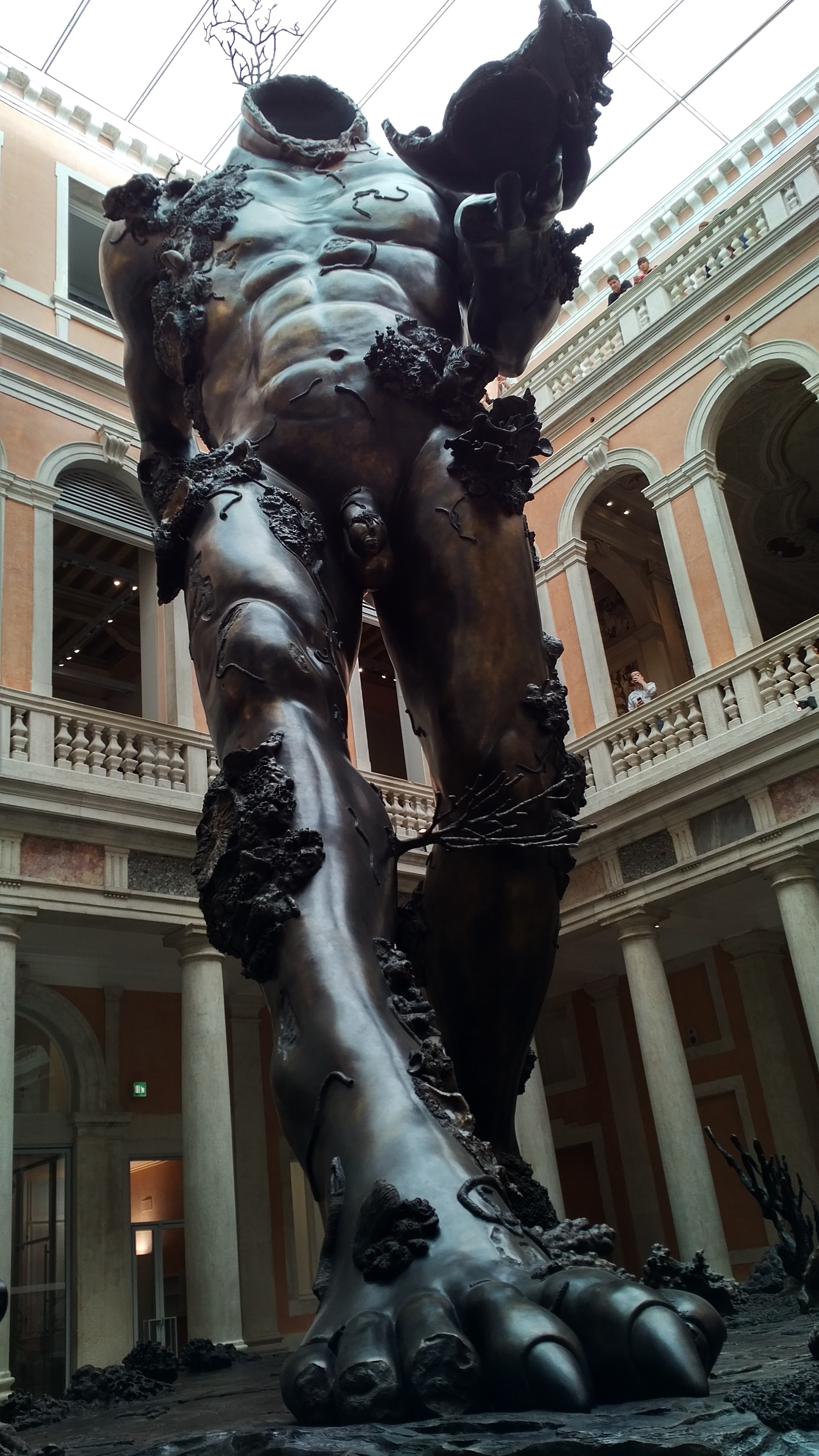
D. Hirst_Demon with a Bowl – Exhibiton enlargement
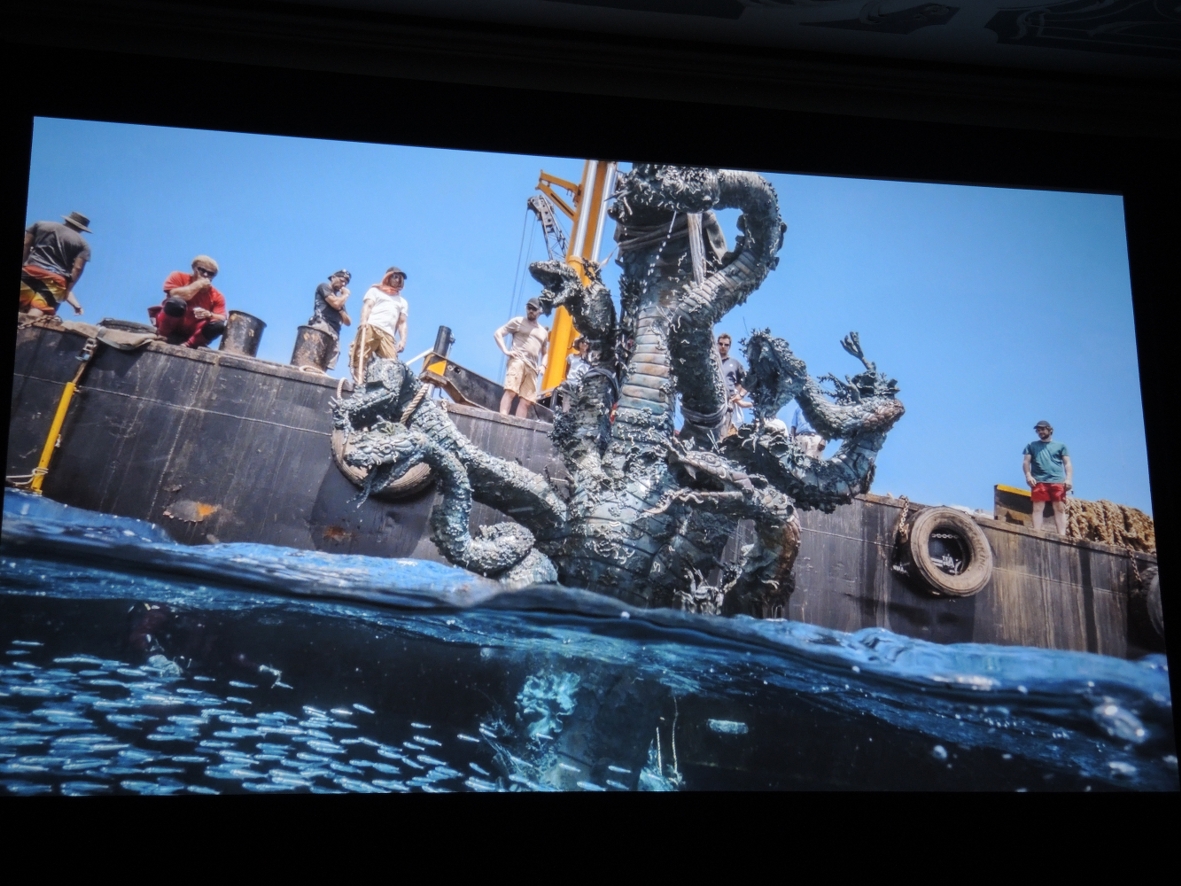
D. Hirst_Recovering ‘Hidra and Kali’ from the wreckage site
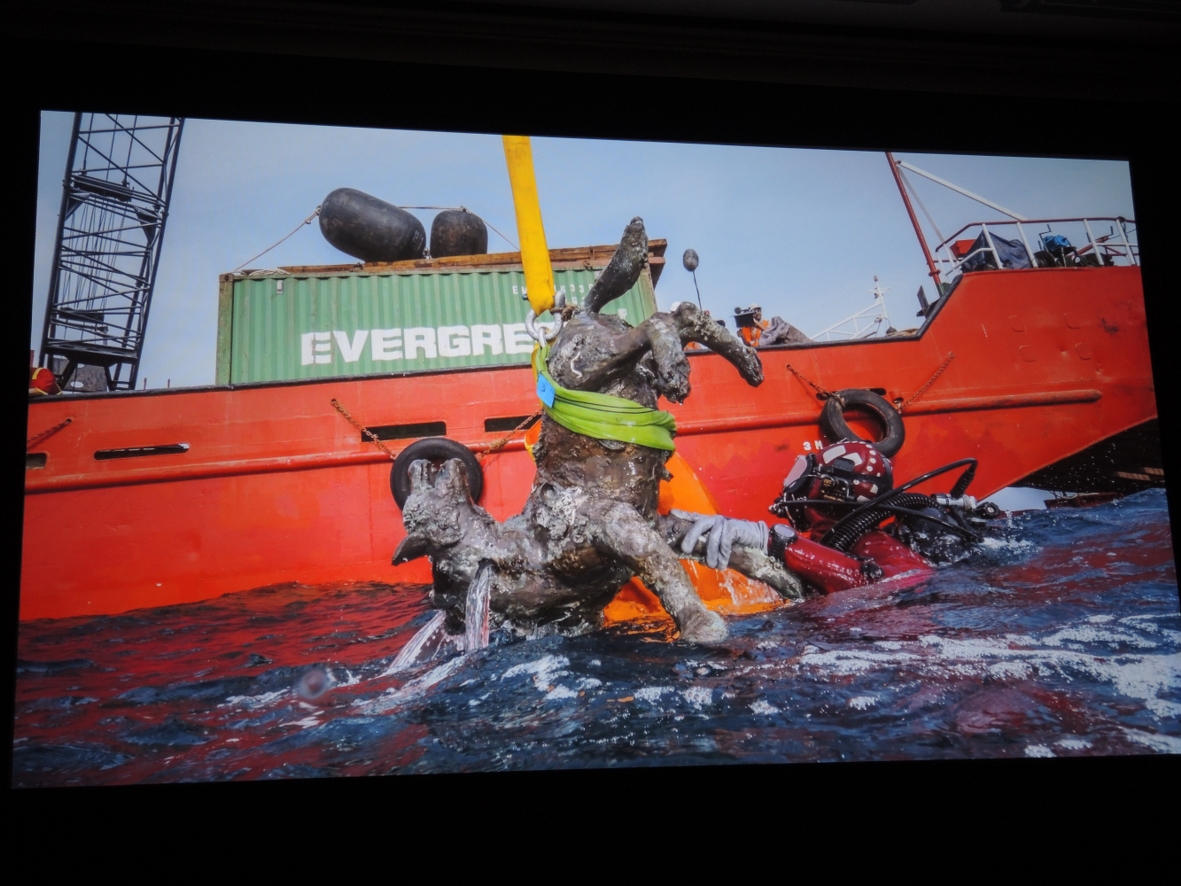
D. Hirst_Recovering ‘Cerberus’ from wreckage site
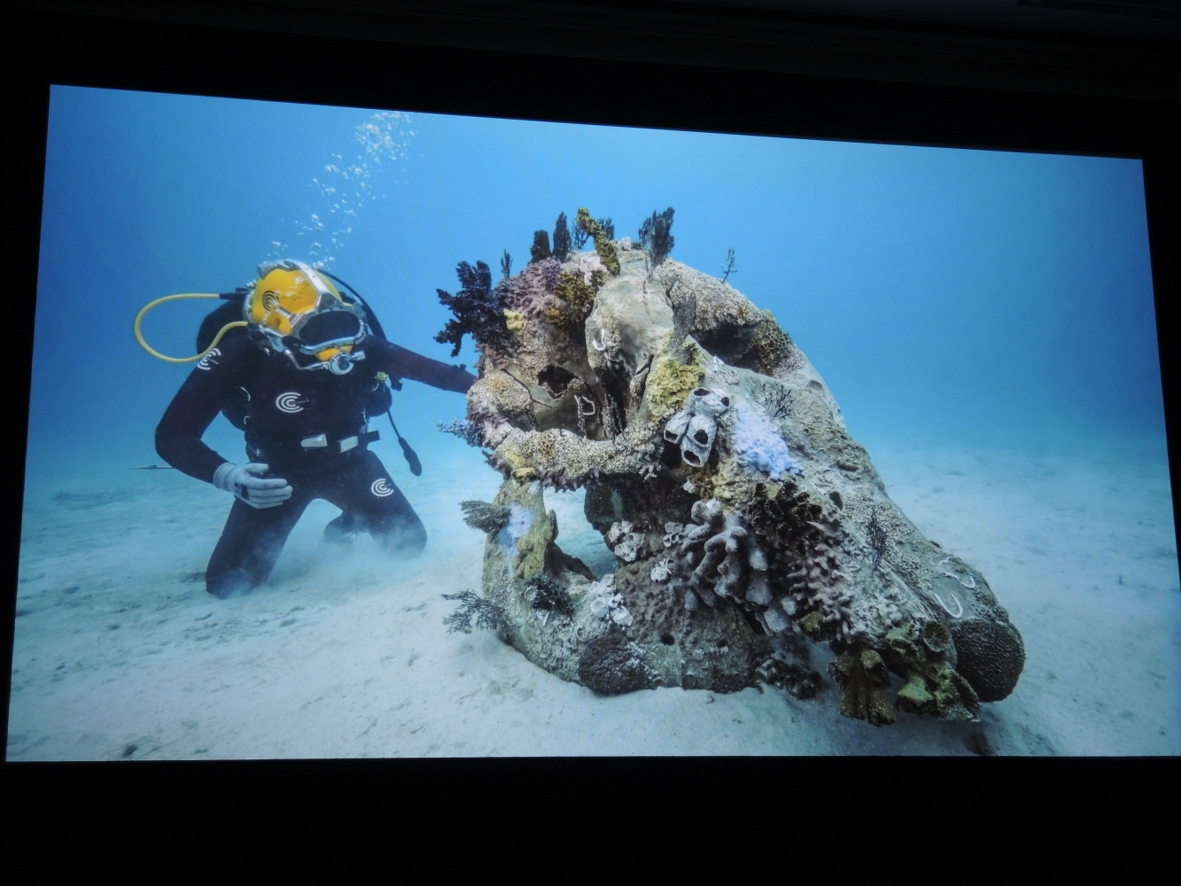
D. Hirst_Recovering ‘Skull of a Cyclop’ from wreckage site
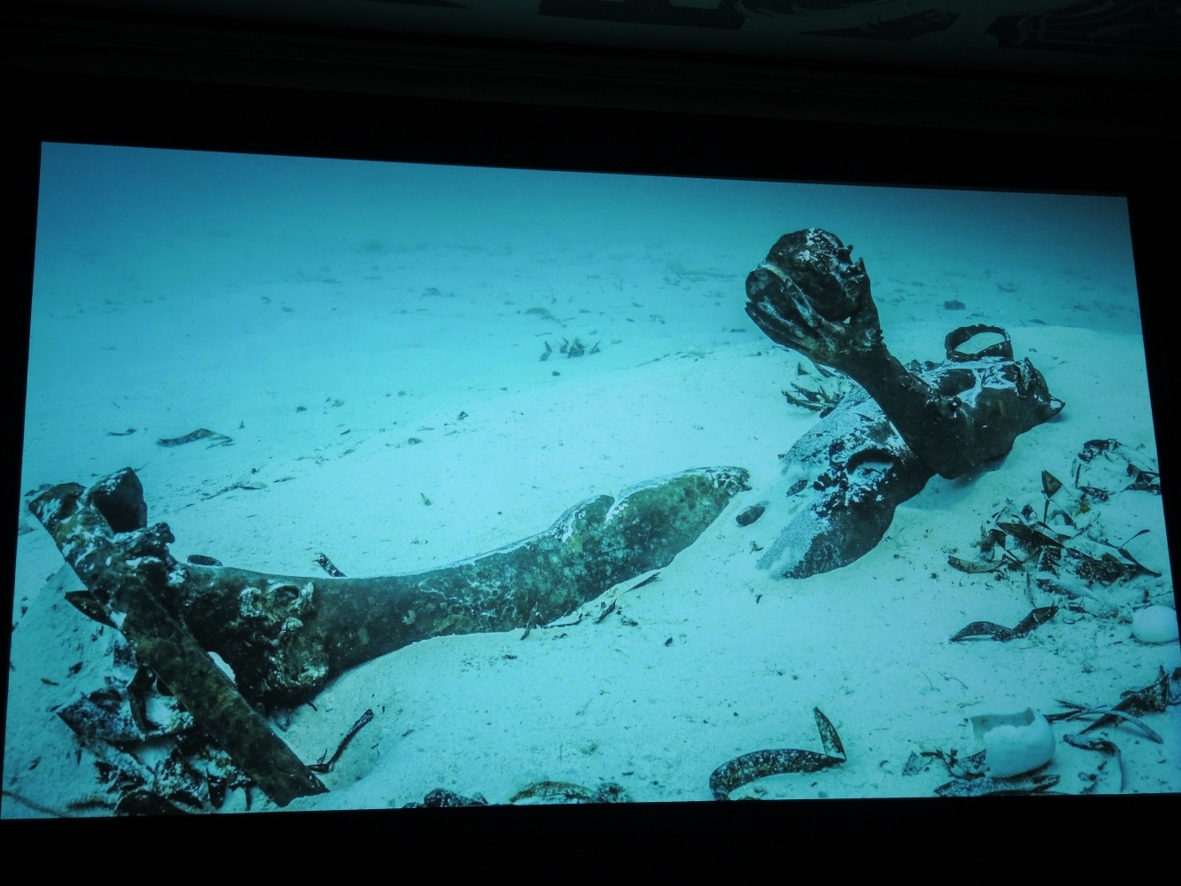
D. Hirst_Recovering ‘Demon with a bowl’ from wreckage site
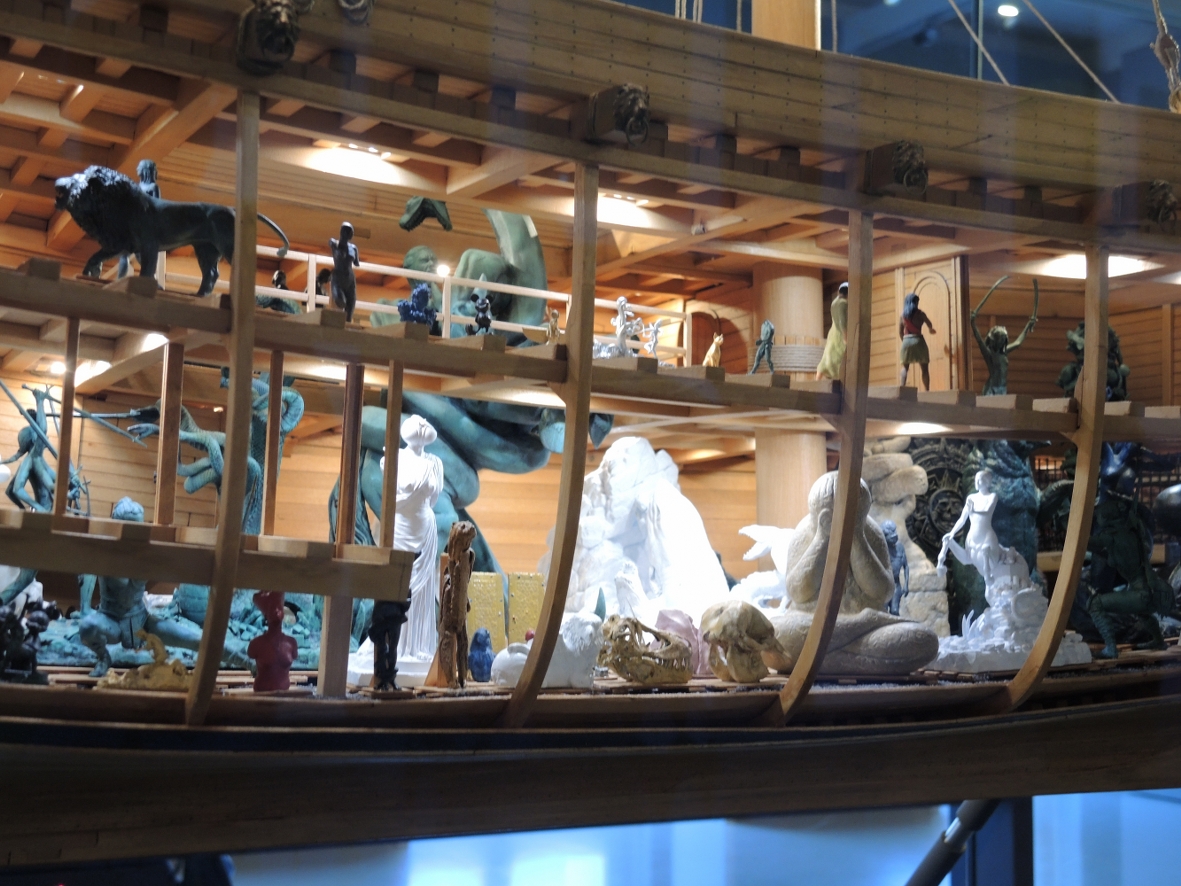
D. Hirst_Scale model of the ‘Unbelievable’ with suggested cargo locations
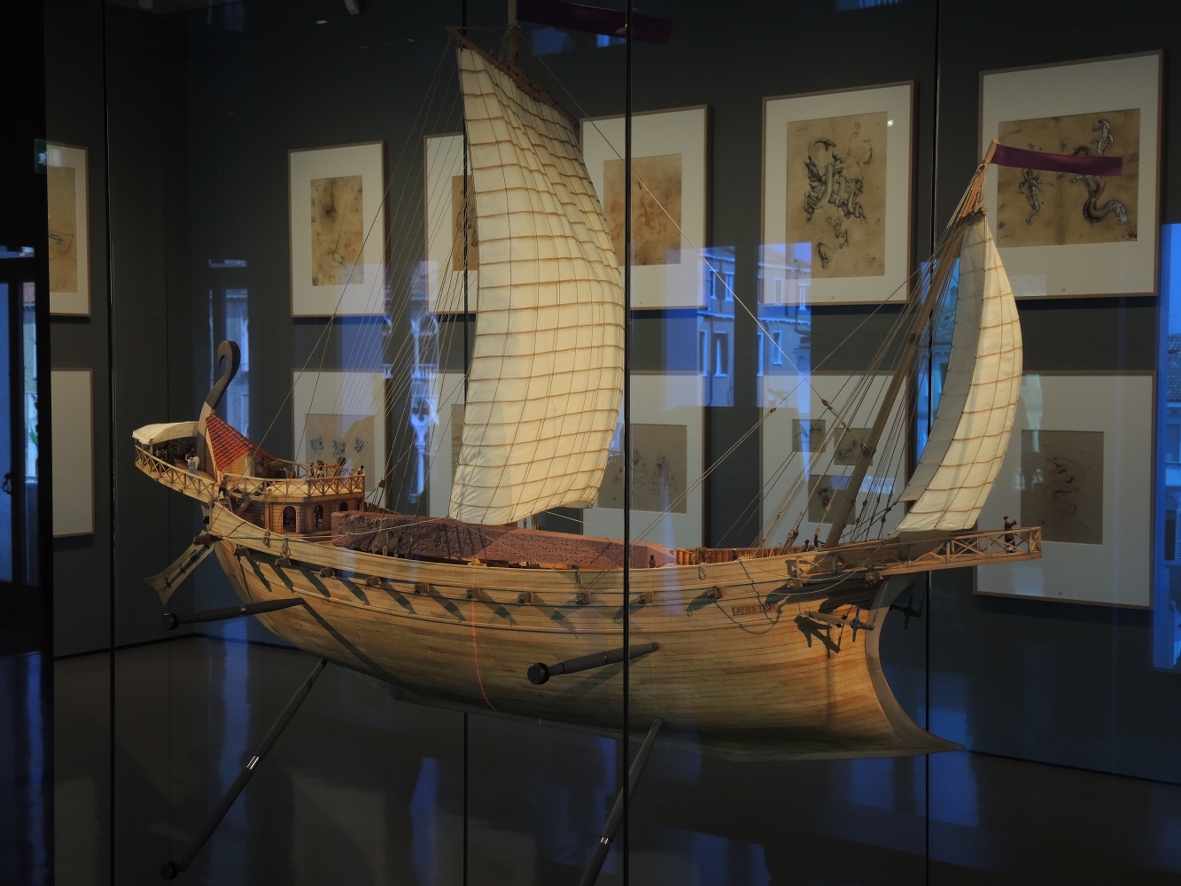
D. Hirst_Scale models of the ‘Unbelievable’

D. Hirst_Eccentric flints

D. Hirst_Coinage
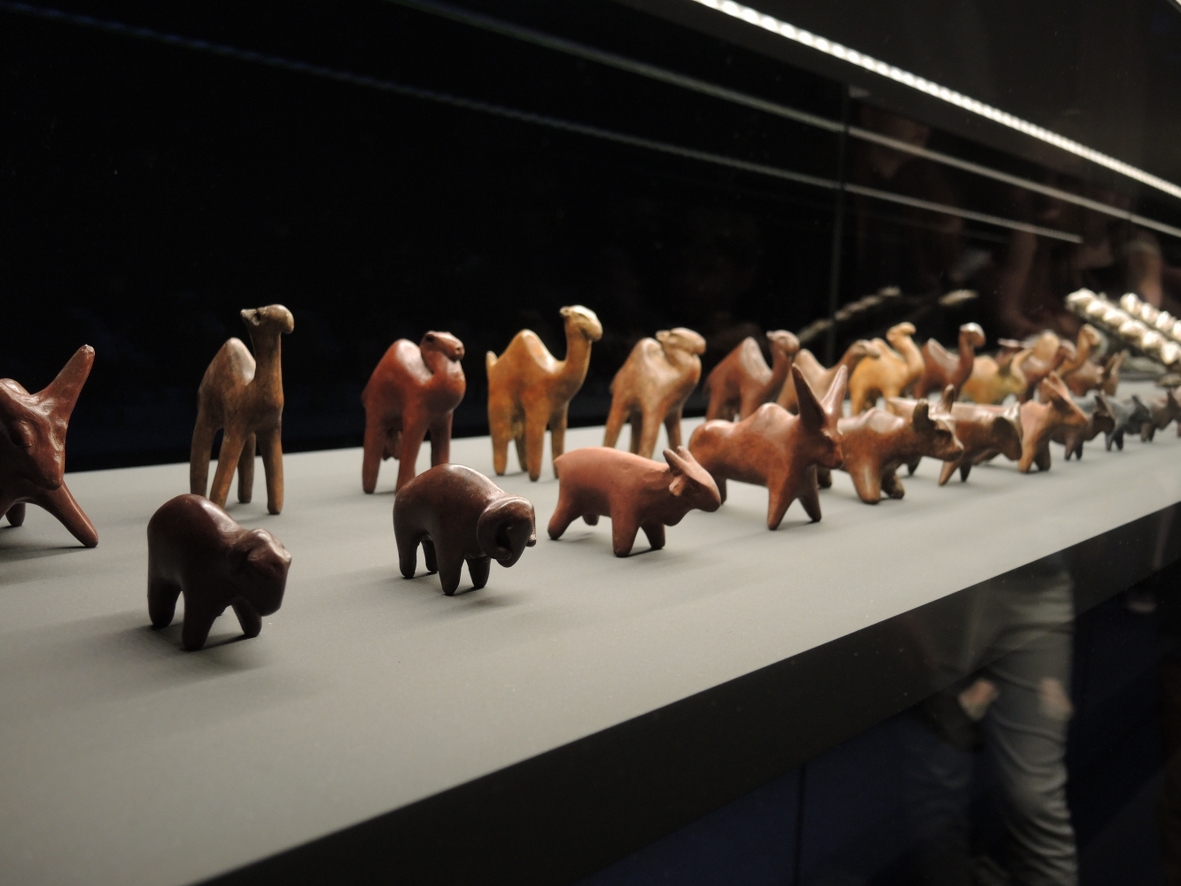
D. Hirst_Amìnimal figurines
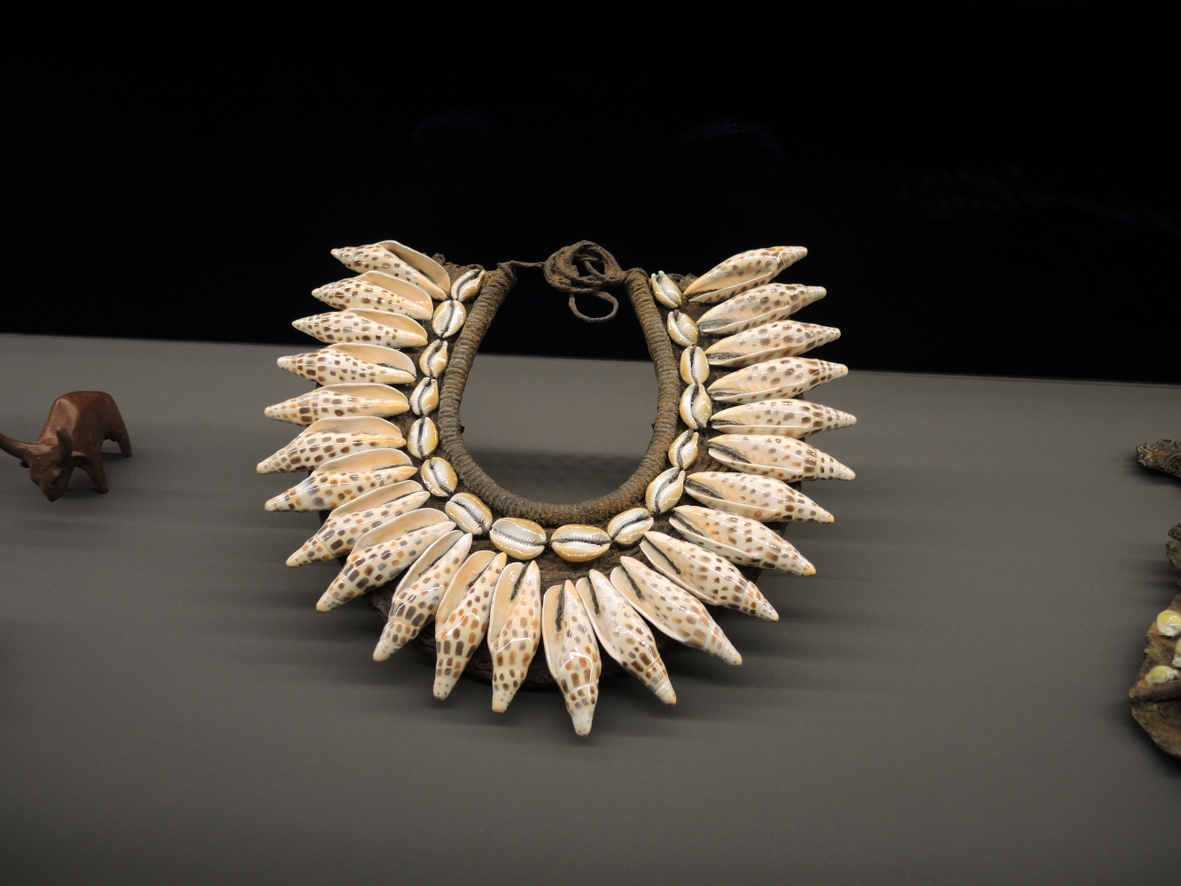
D. Hirst_Shell necklace
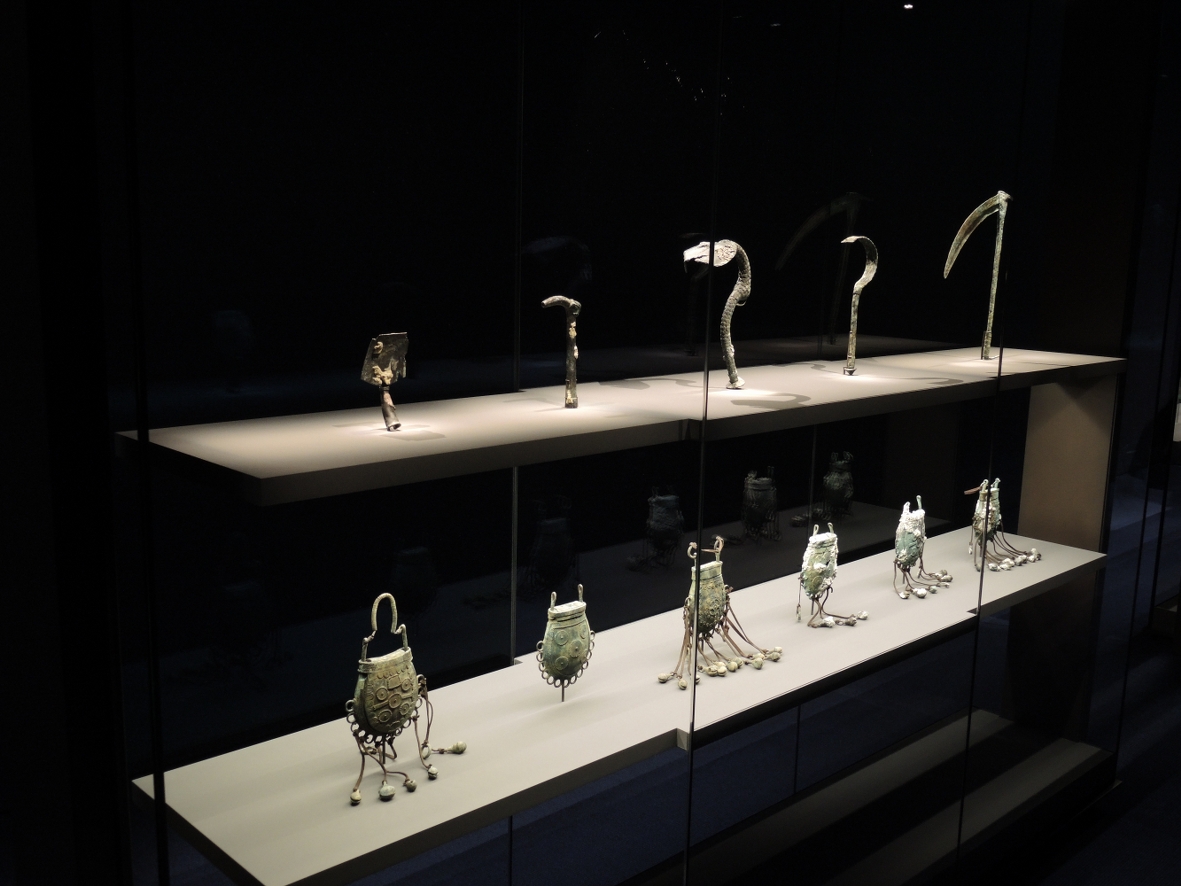
D. Hirst_Array of currency scyhtes, hoes and pouches
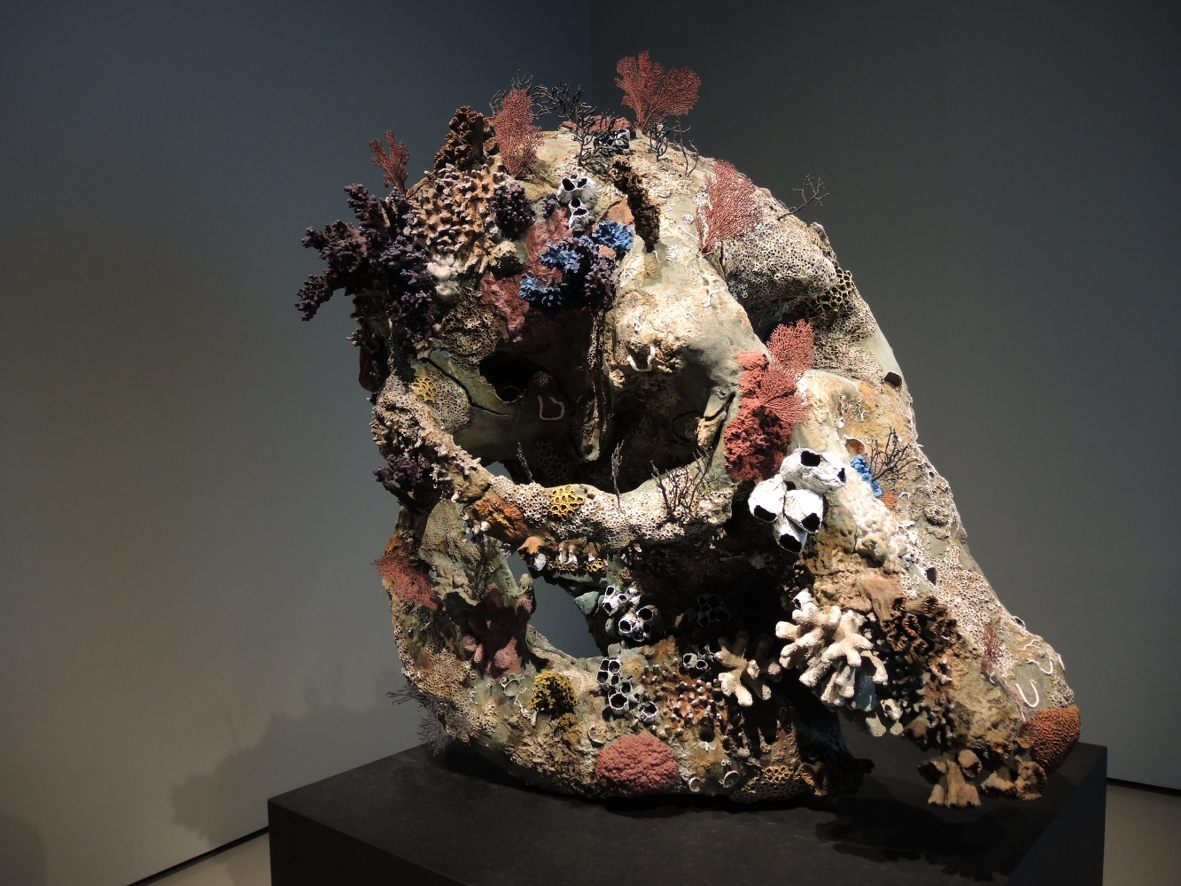
D. Hirst_Skull of a Cyclope
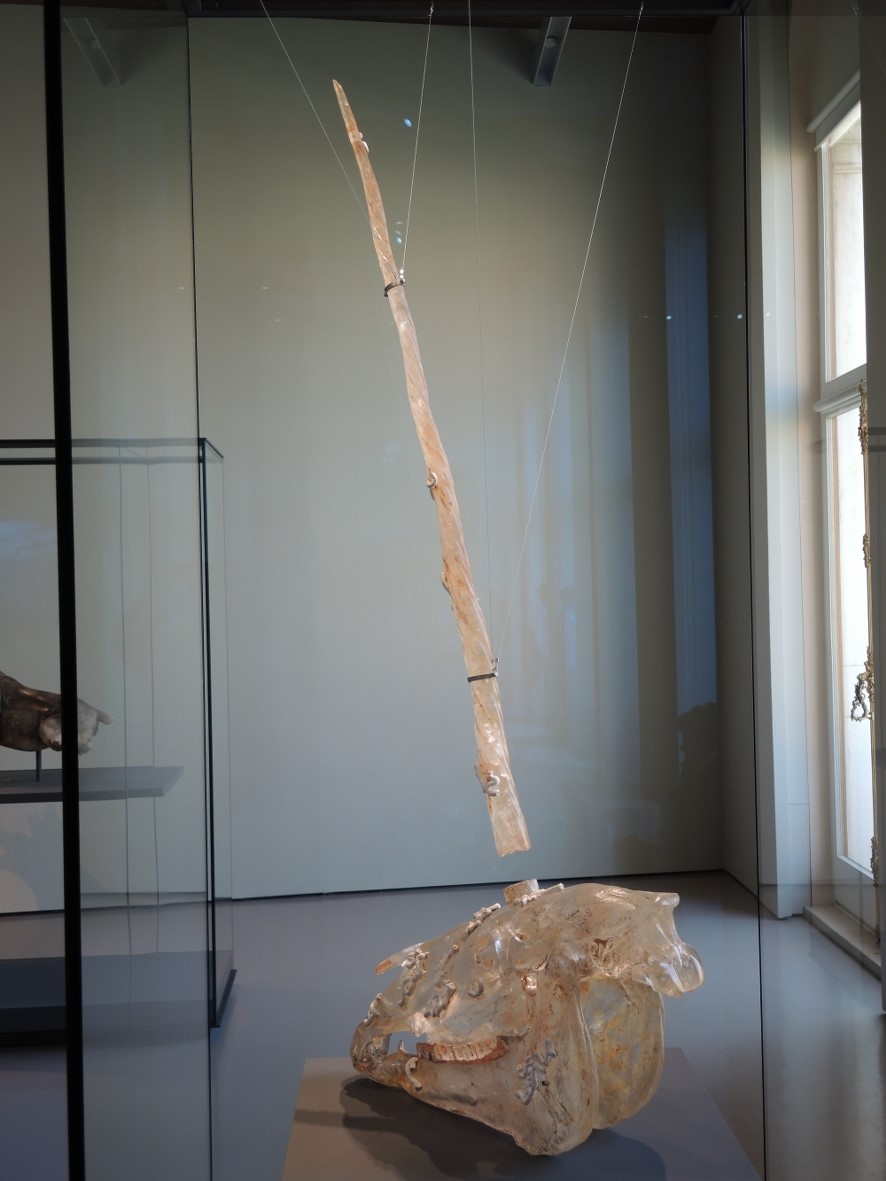
D. Hirst_Skull of a Unicorne
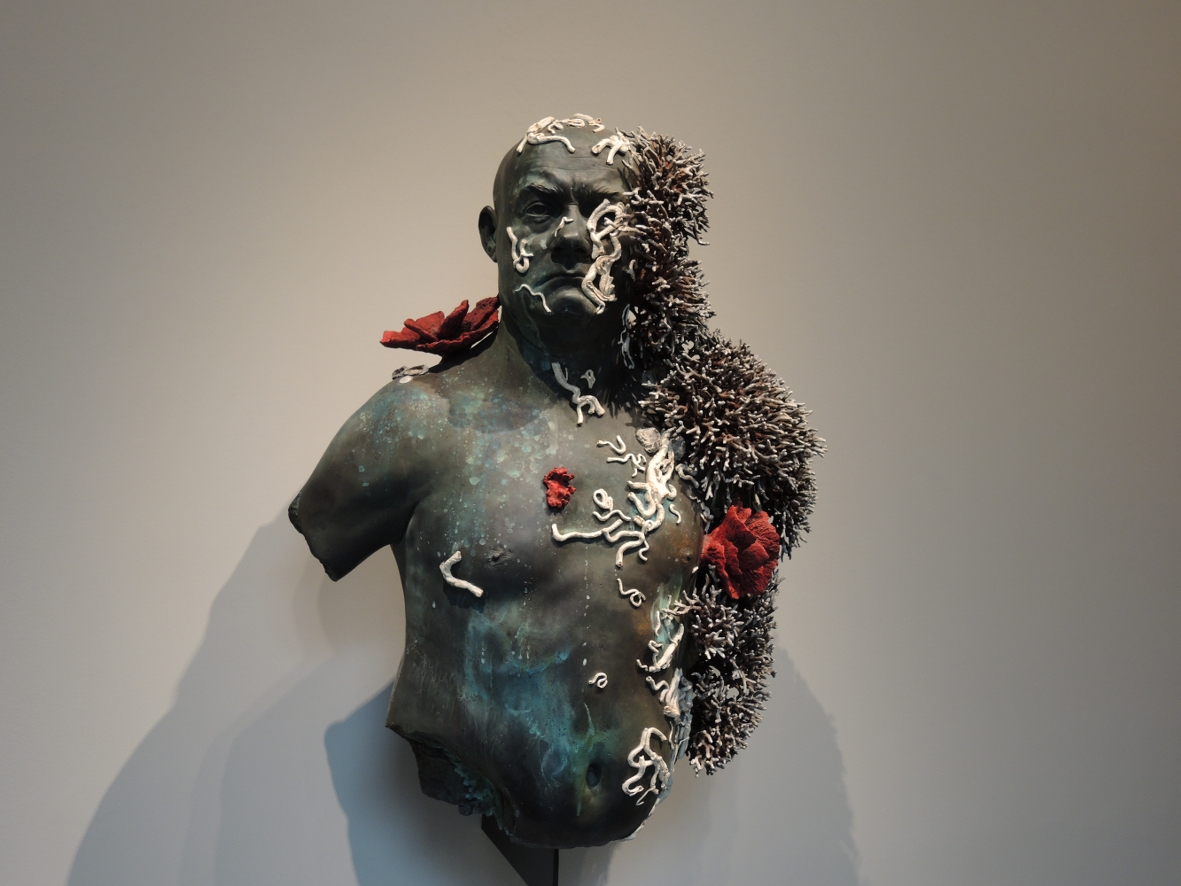
D. Hirst_Bust of the collector
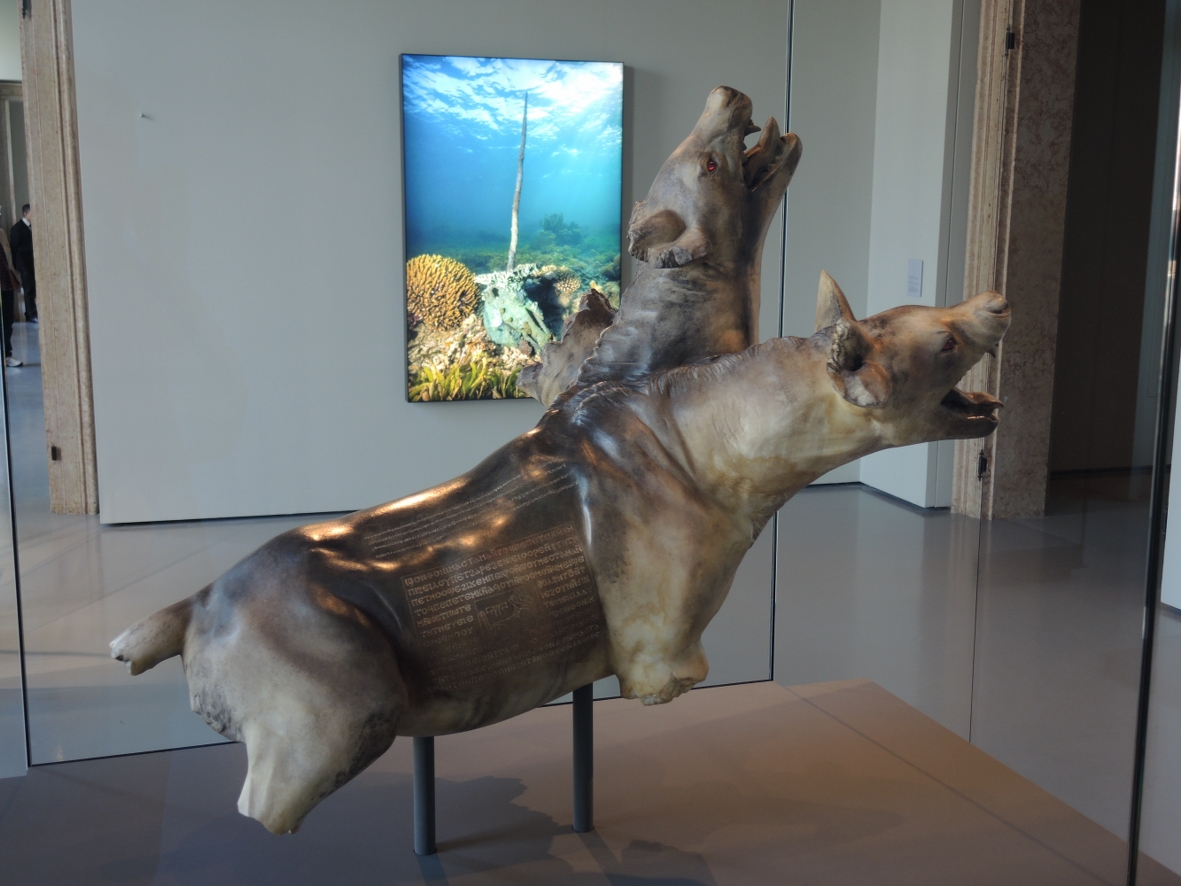
D. Hirst_Cerberus
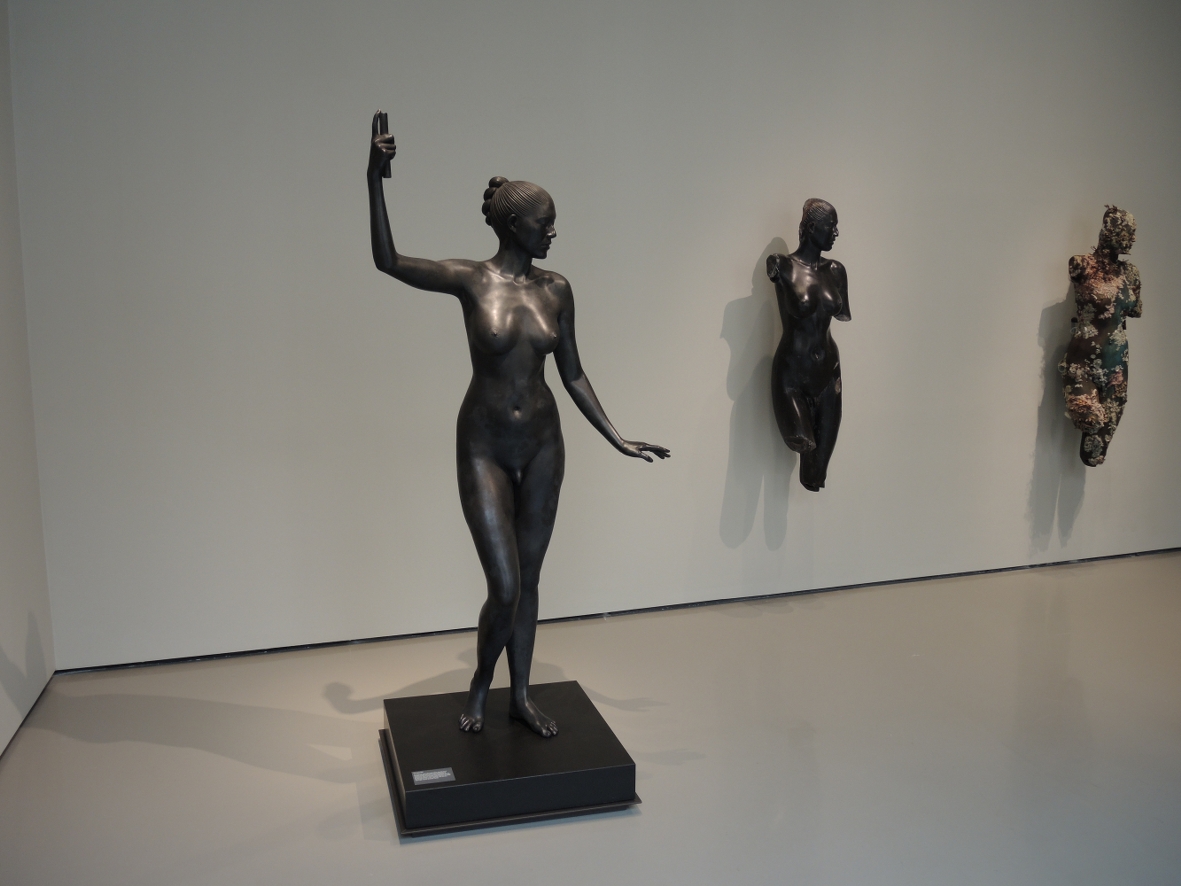
D. Hirst_Hermaphrodites
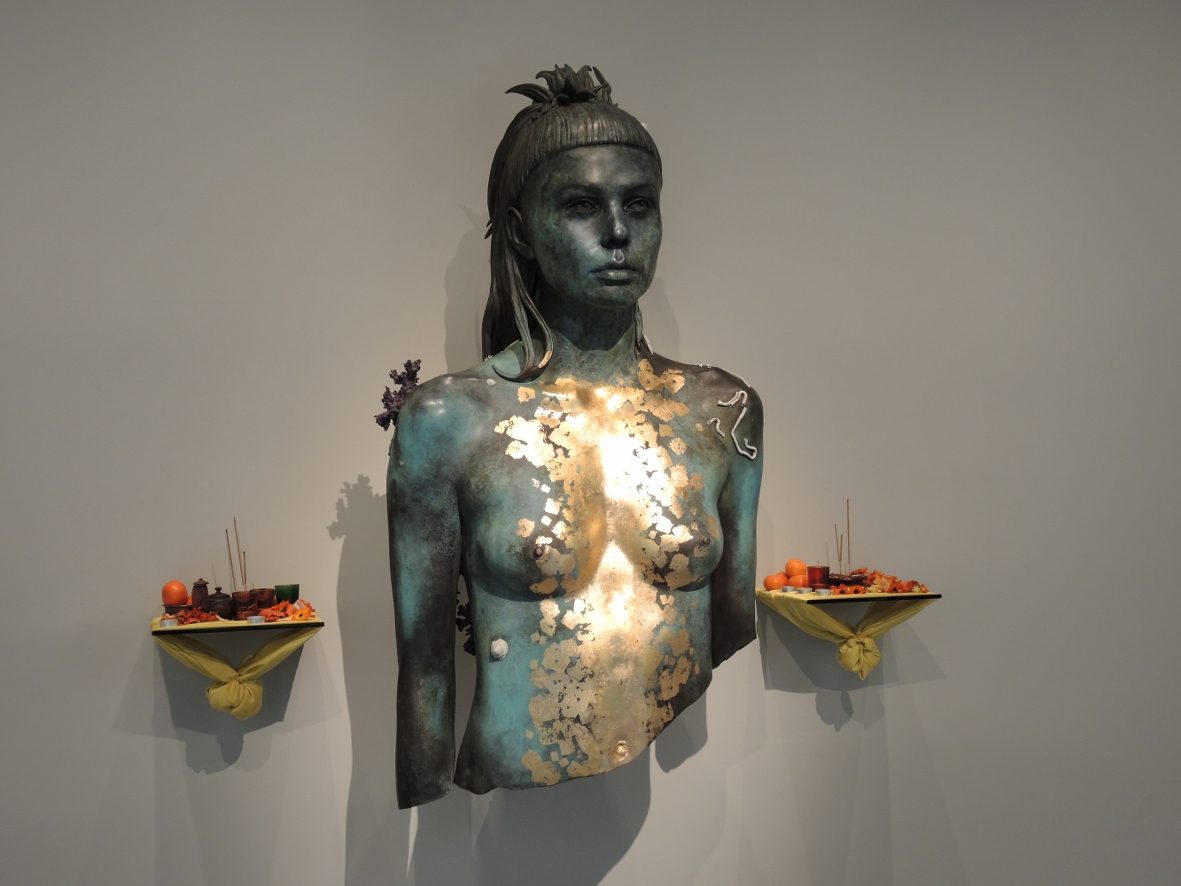
D. Hirst_Aspect of Katie Ishtar Yo-landi
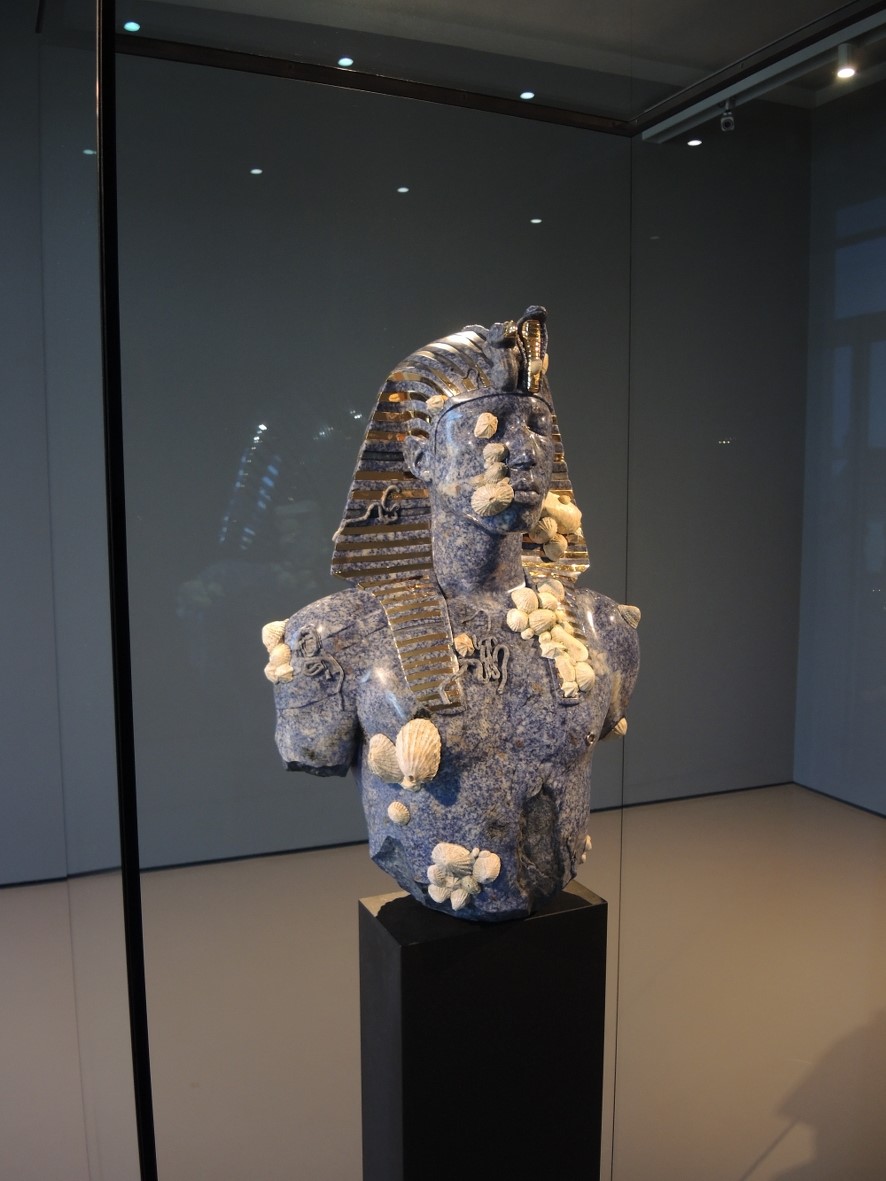
D. Hirst_Unknown Pharao
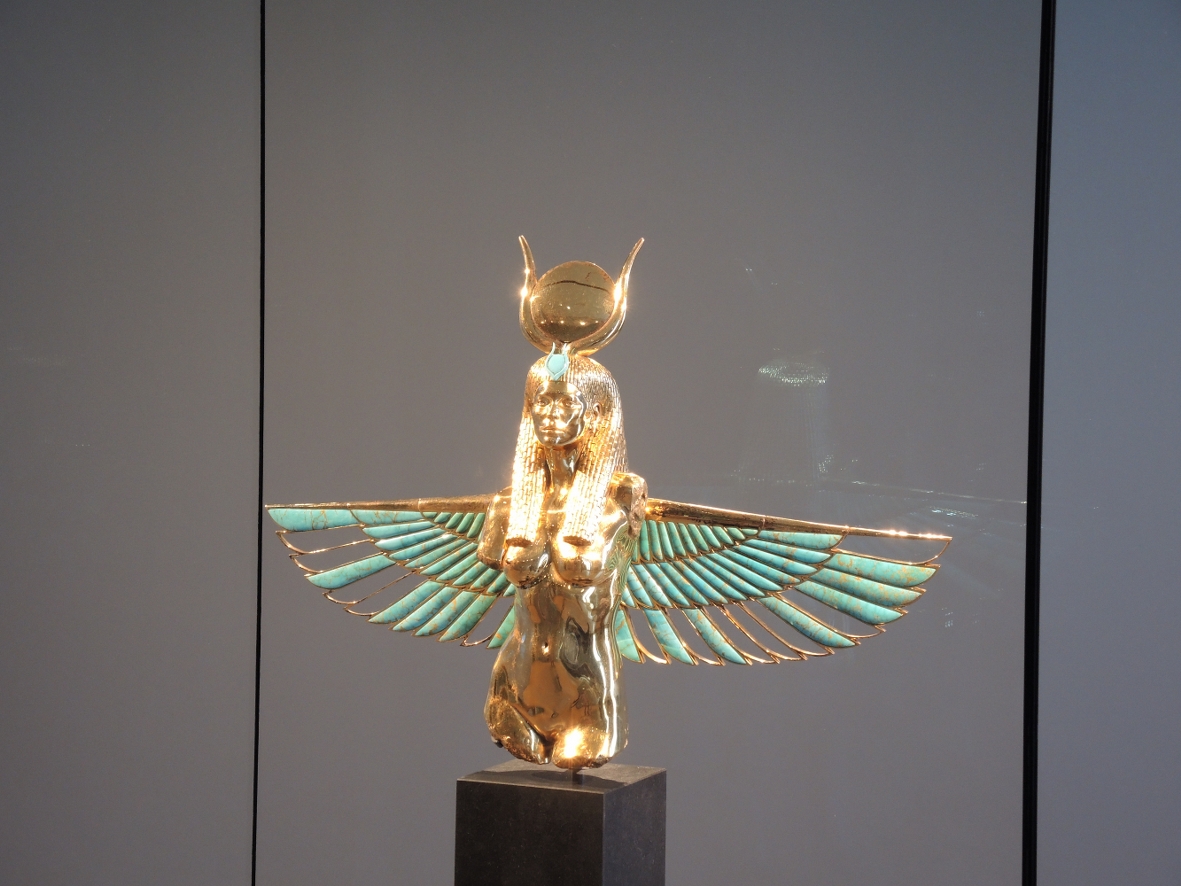
D. Hirst_Hathor
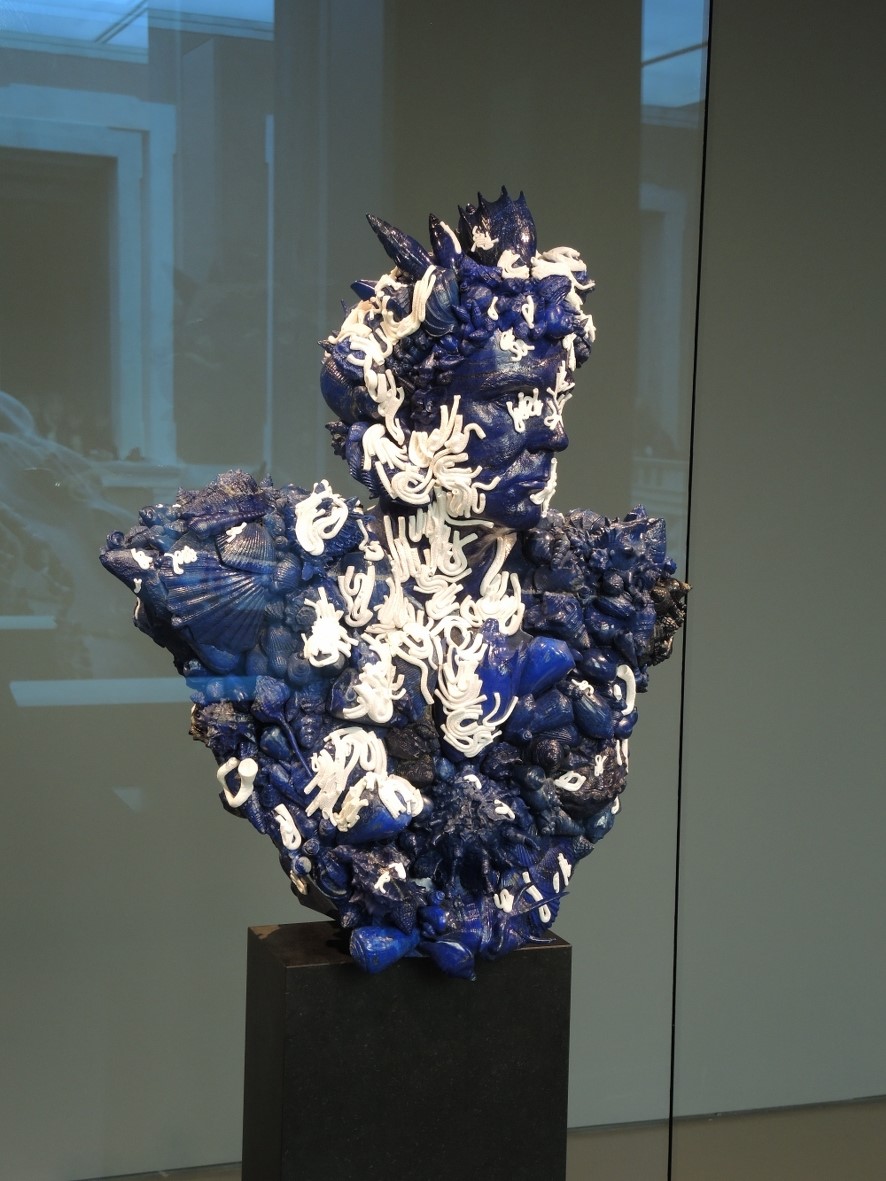
D. Hirst_Neptune

D. Hirst_The Skull benaeath the skin
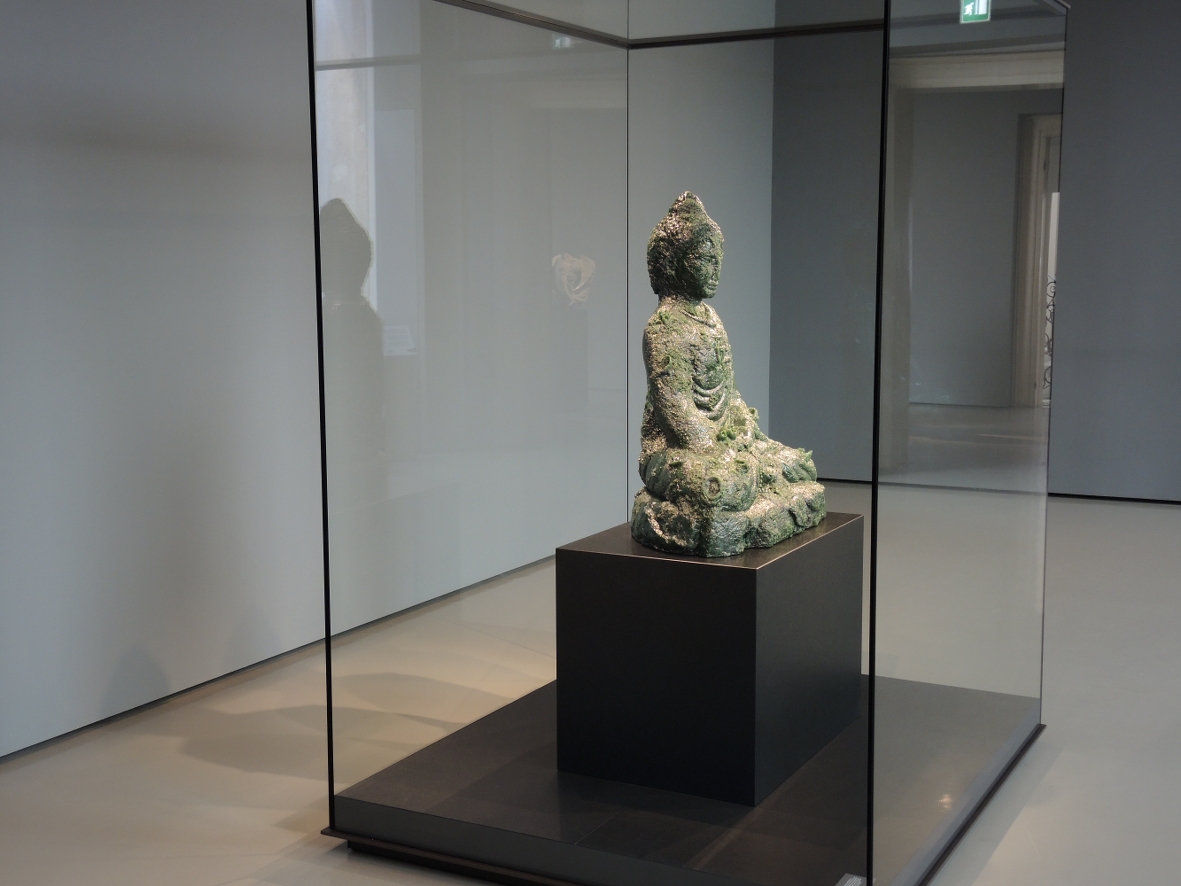
D. Hirst_Jade Buddah
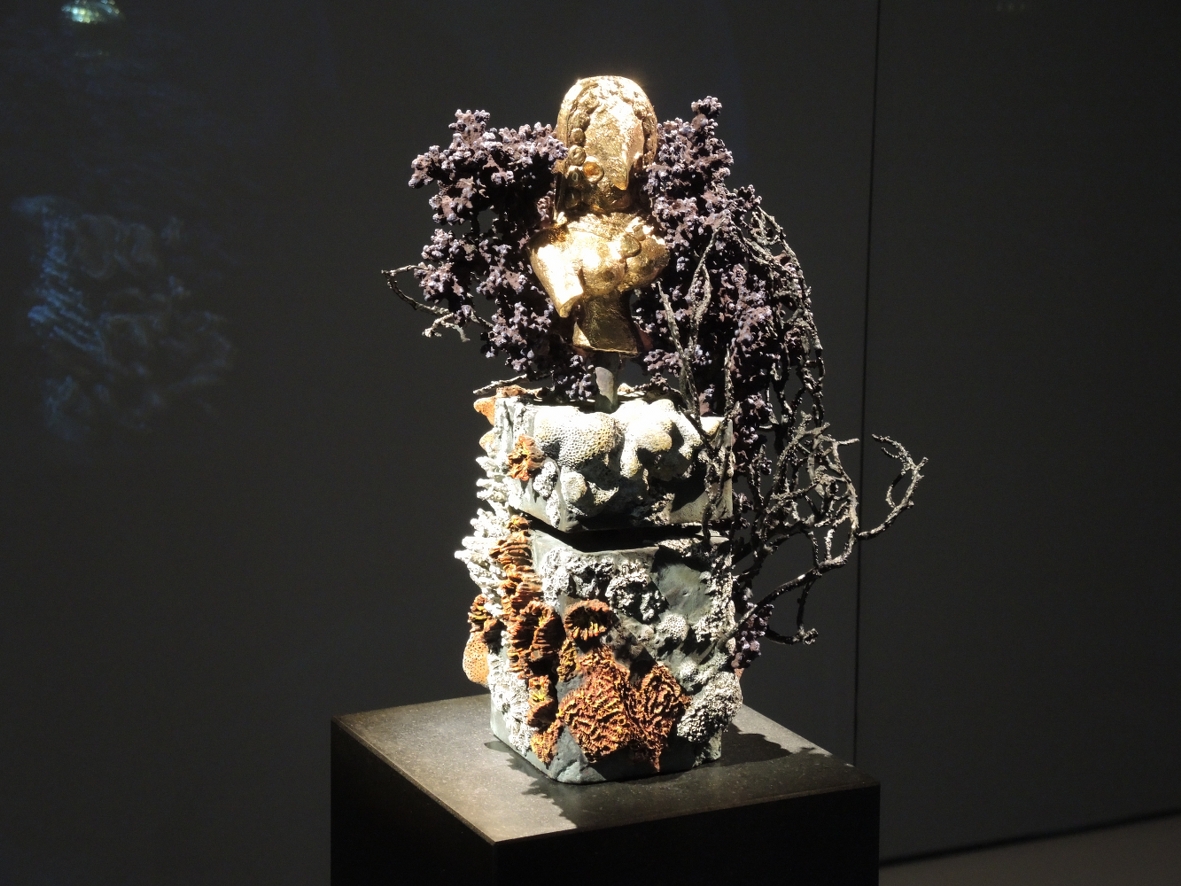
D. Hirst_Abundance
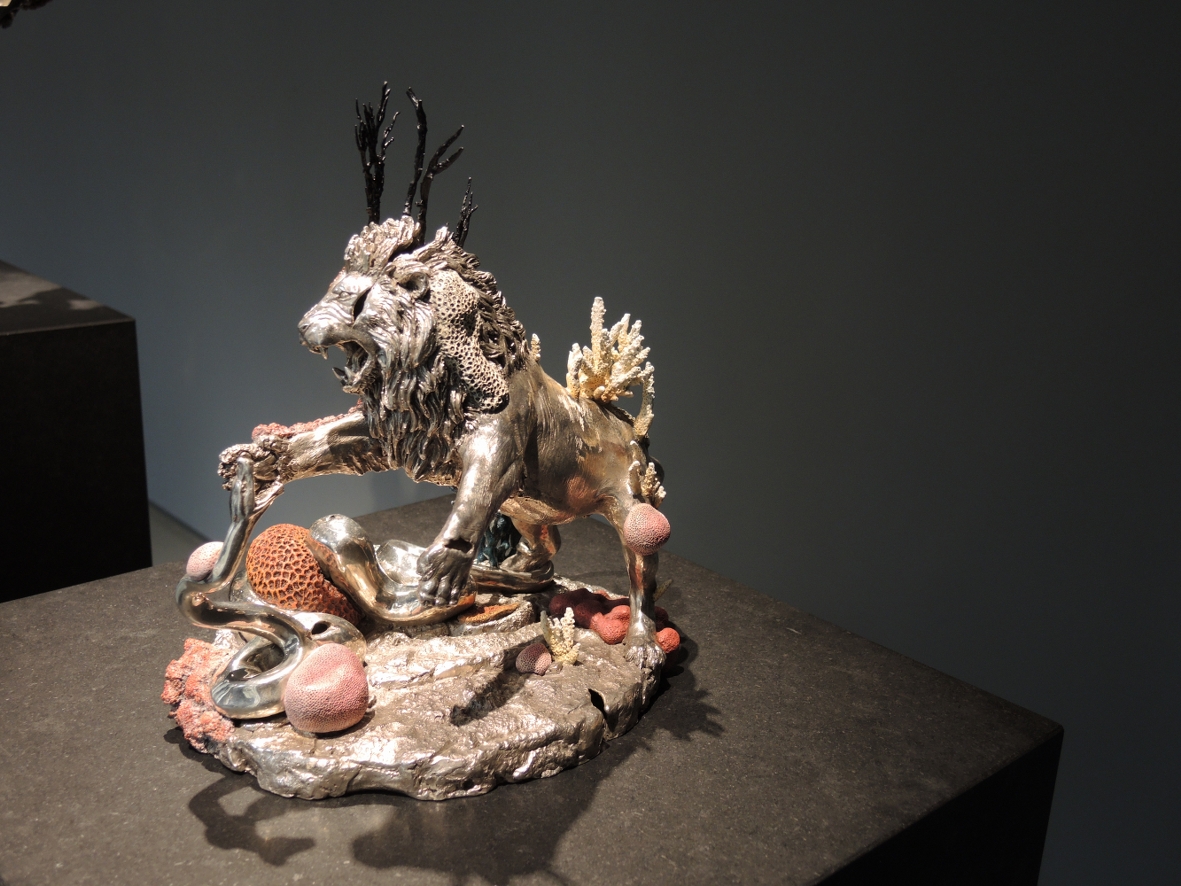
D. Hirst_Lion and Serpent
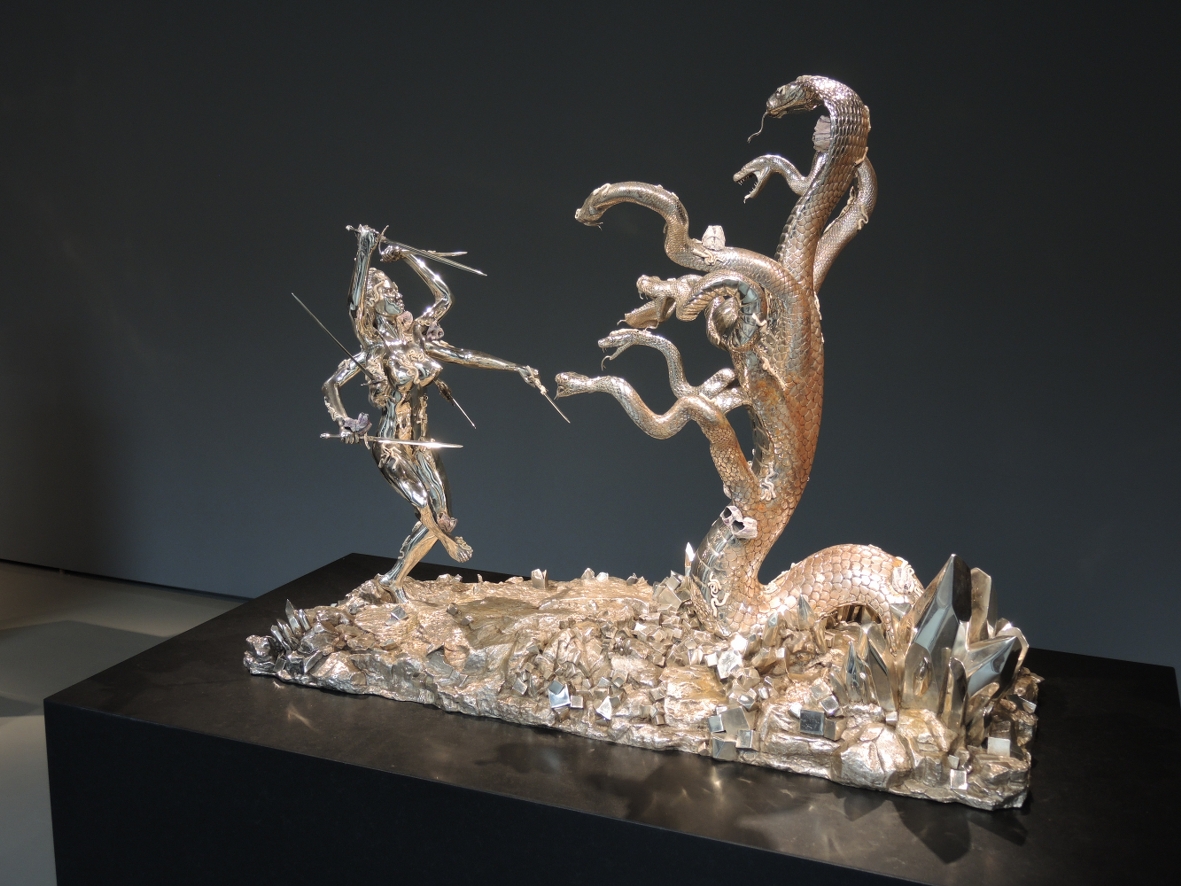
D. Hirst_Hydra and Kali
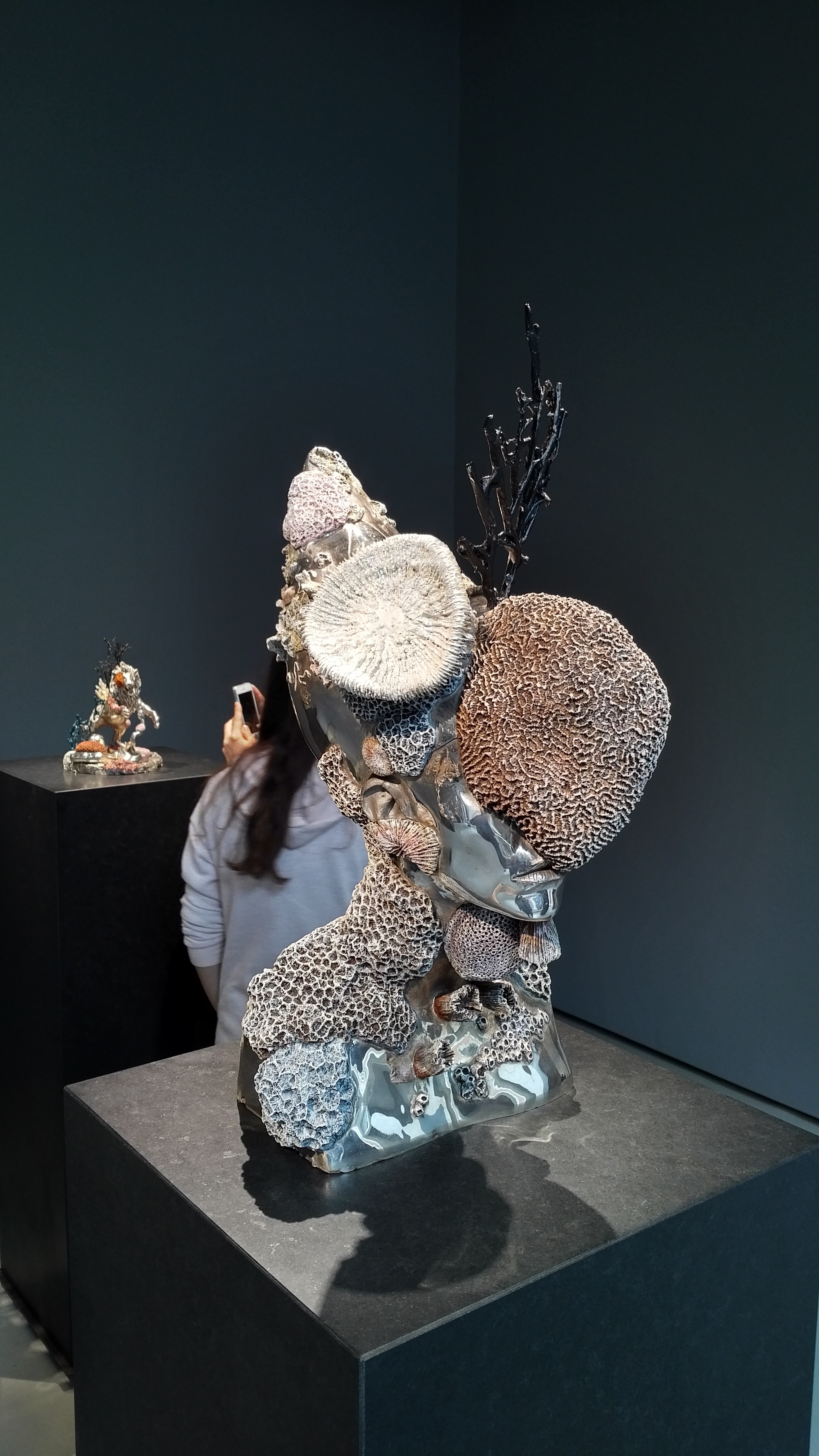
D. Hirst_Head of a Sphinx
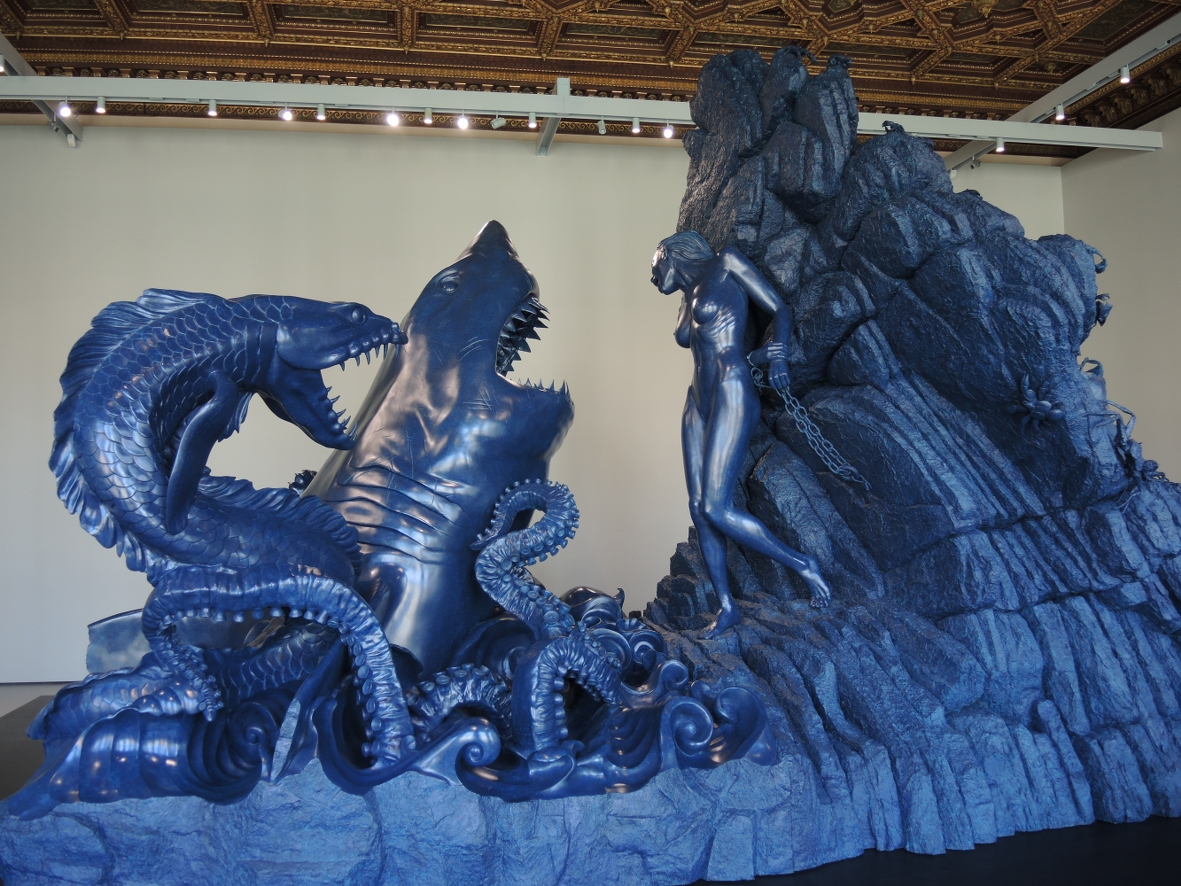
D. Hirst_Andromeda and the Sea Monster
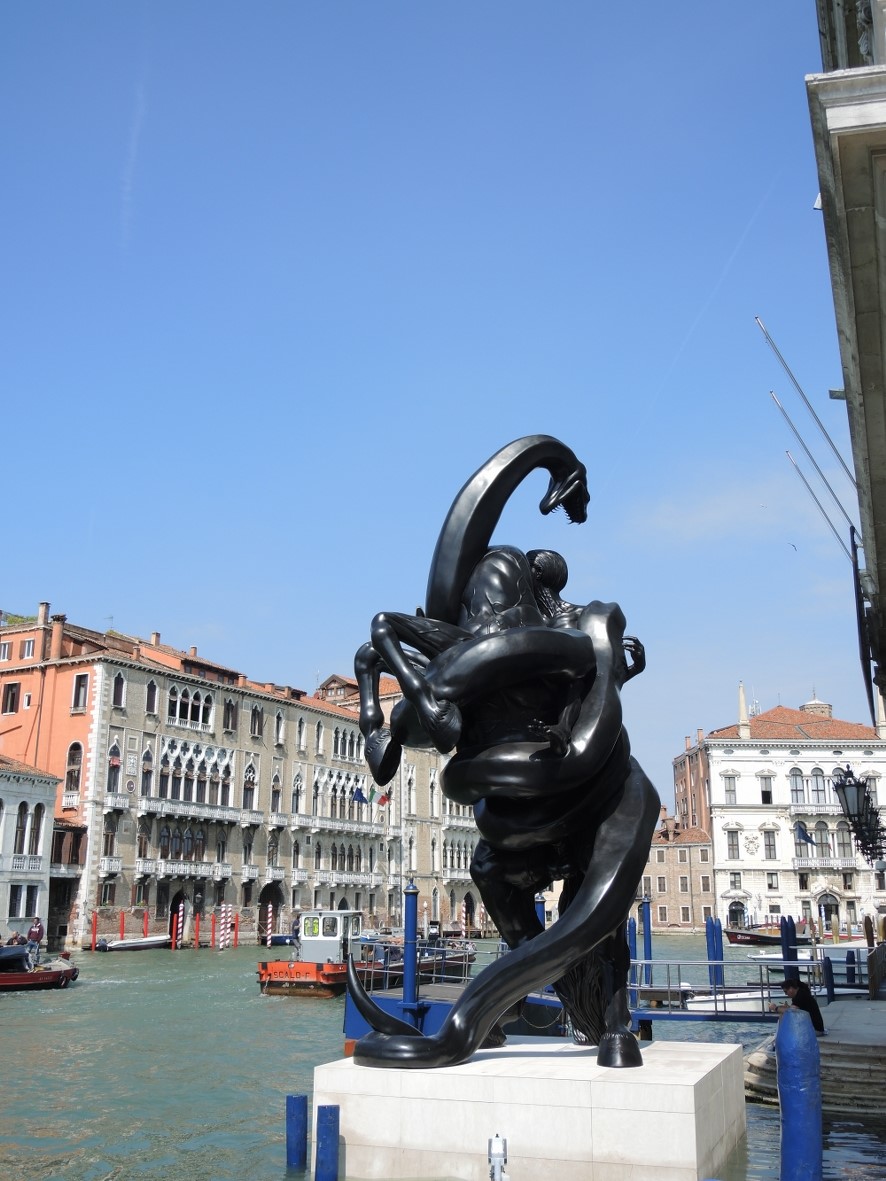
D. Hirst_The Fate of a banished man
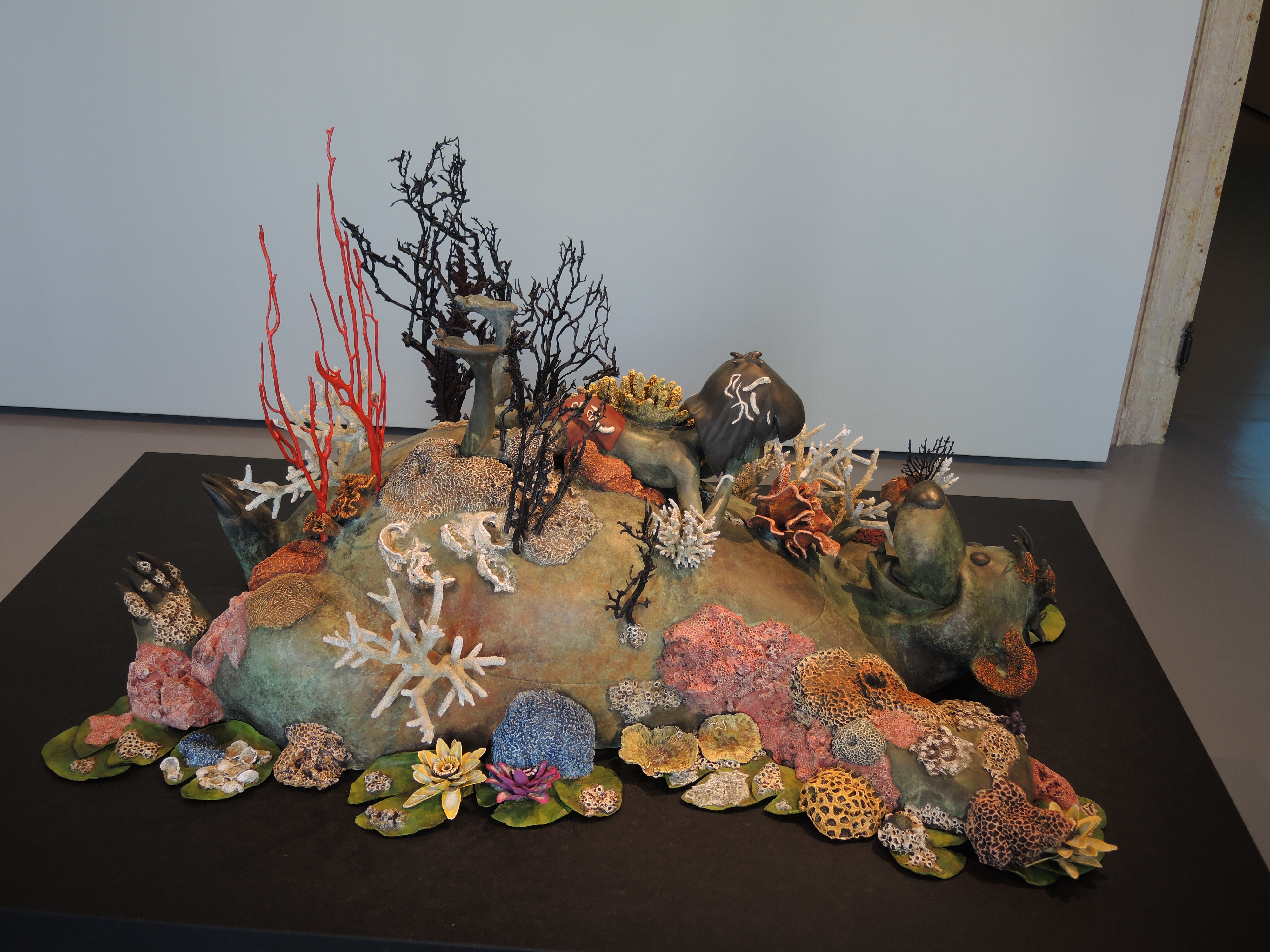
D. Hirst_Best friends
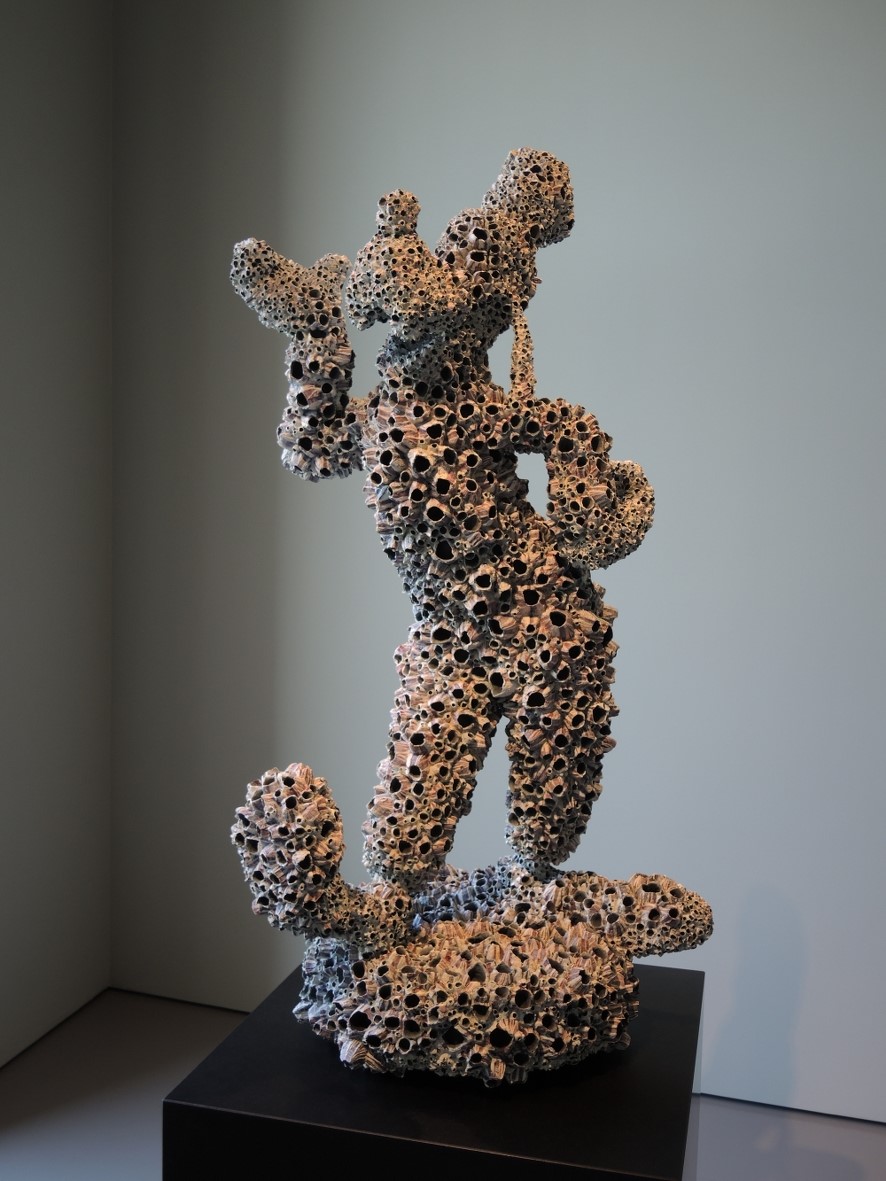
D. Hirst_Goofy
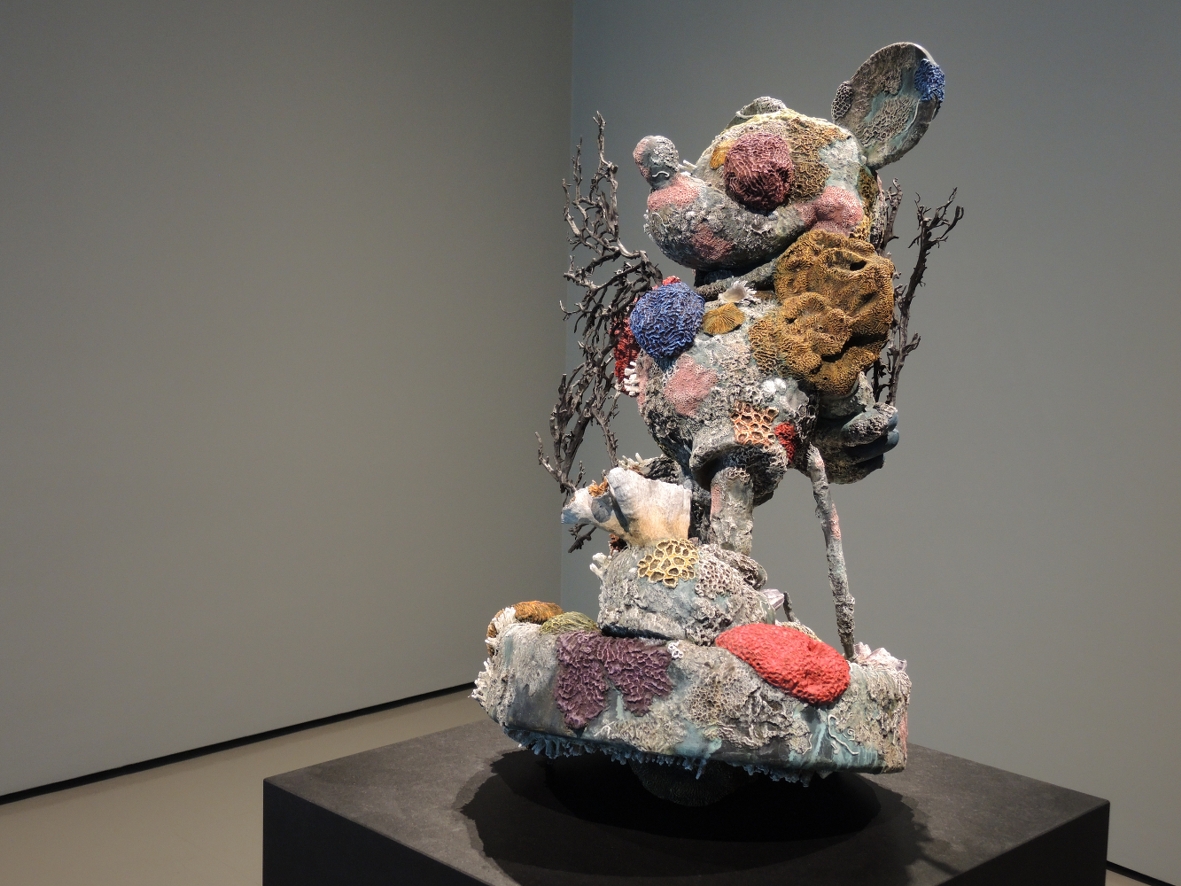
D. Hirst_Mickey

